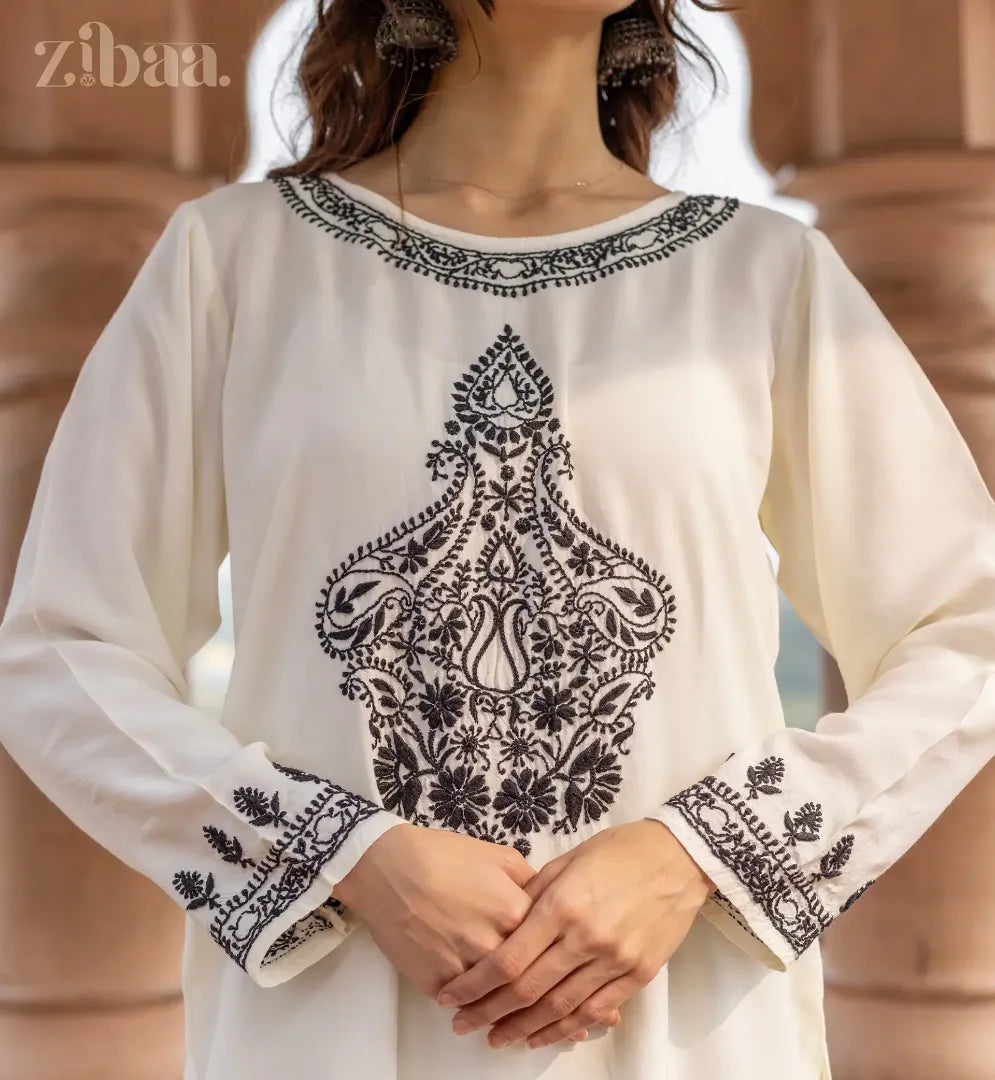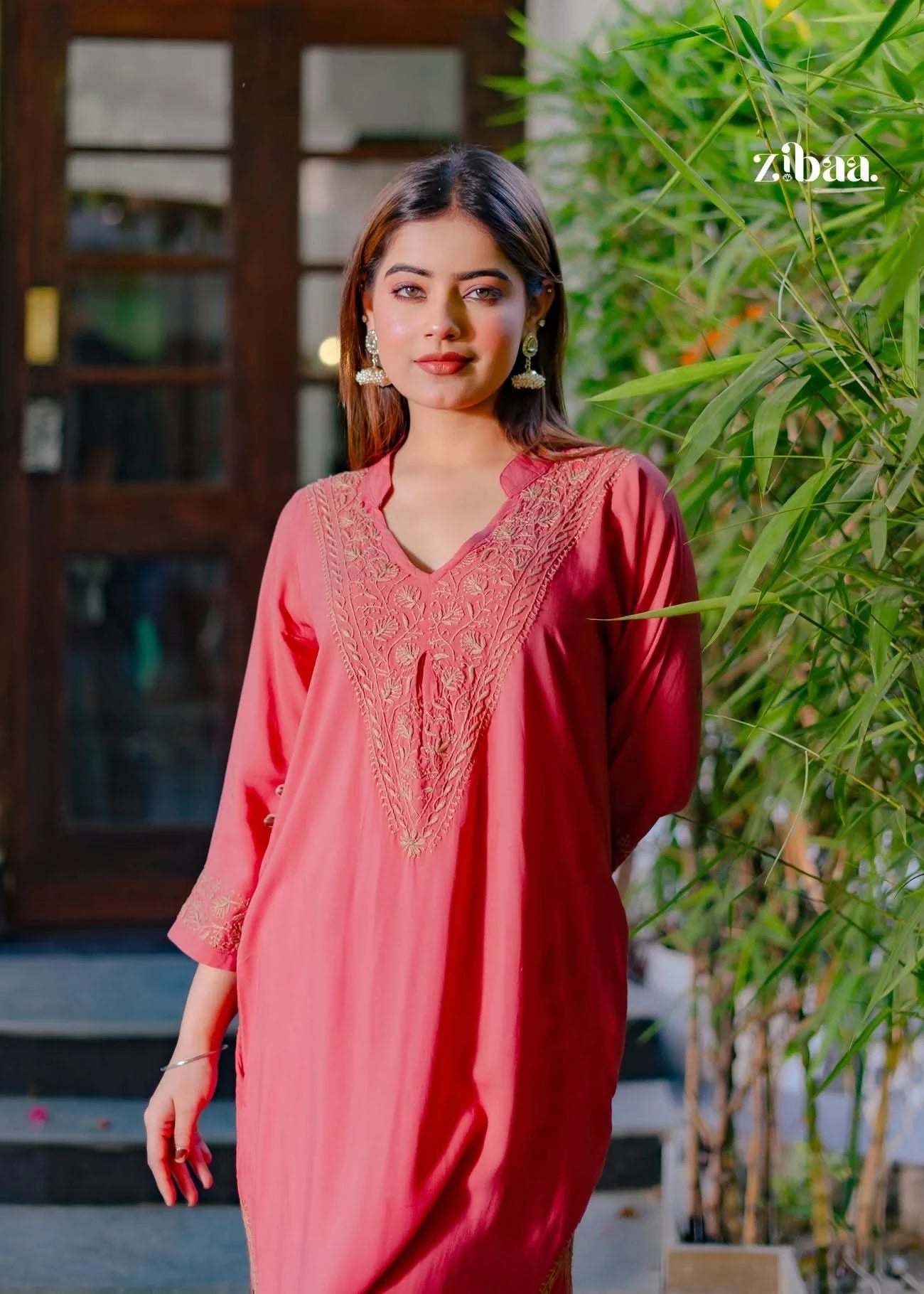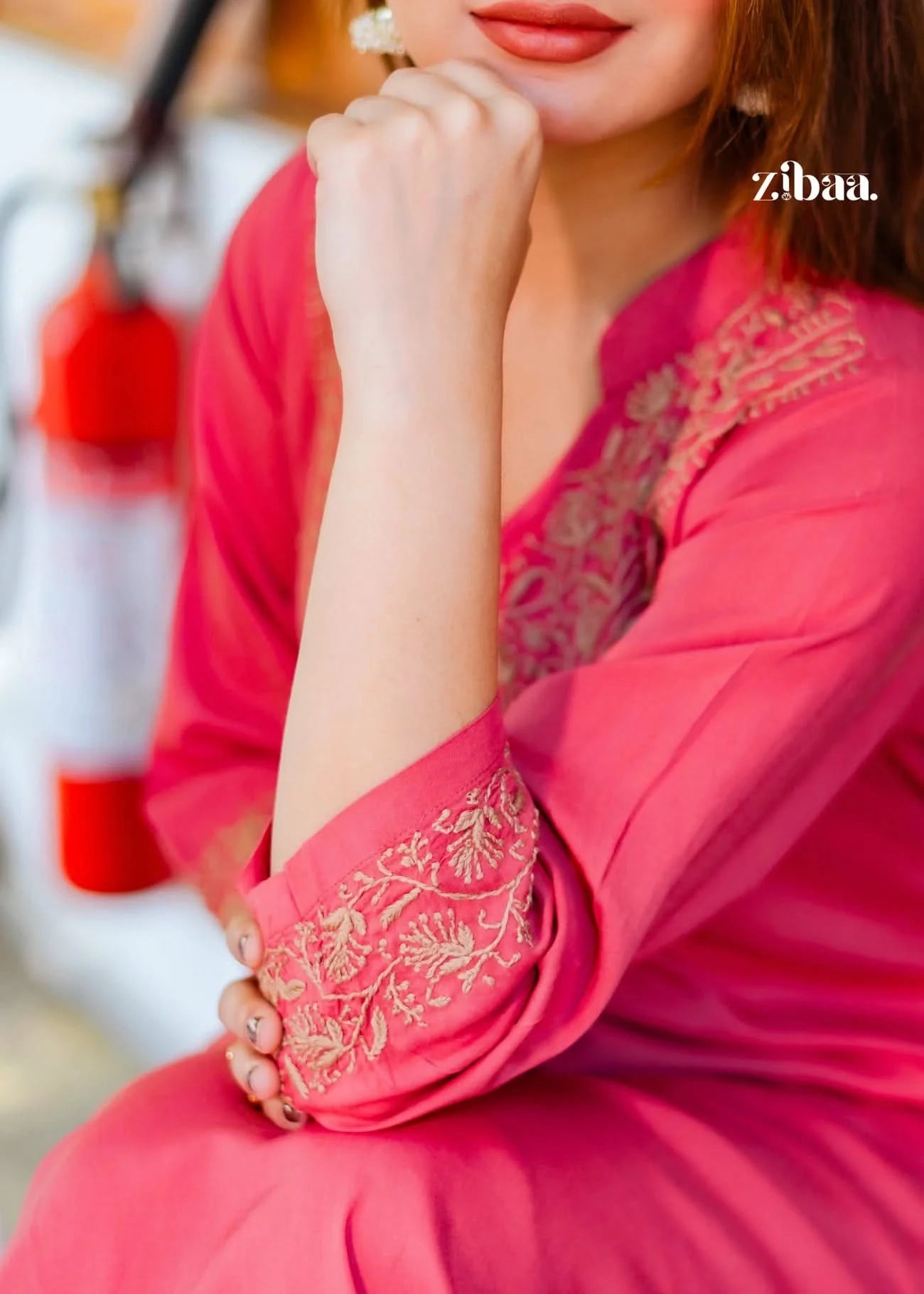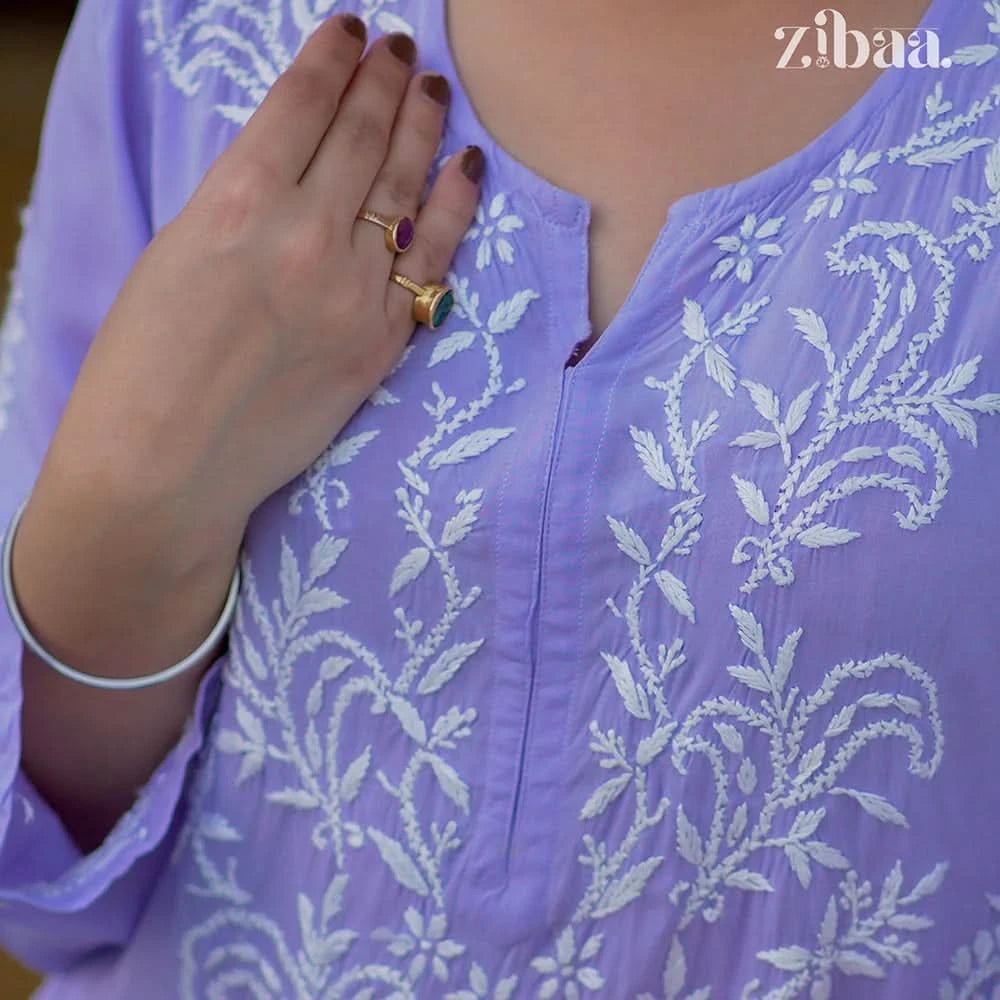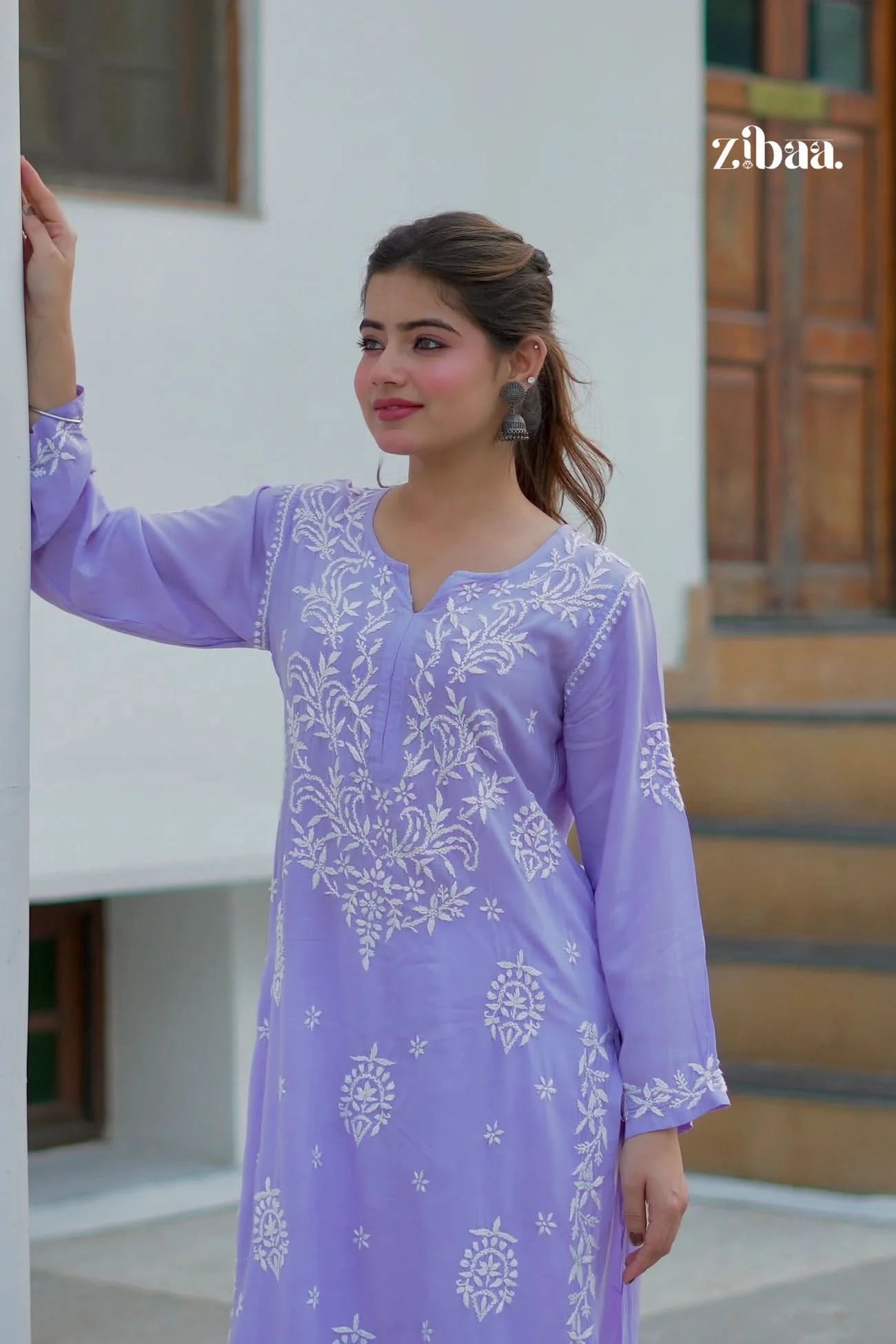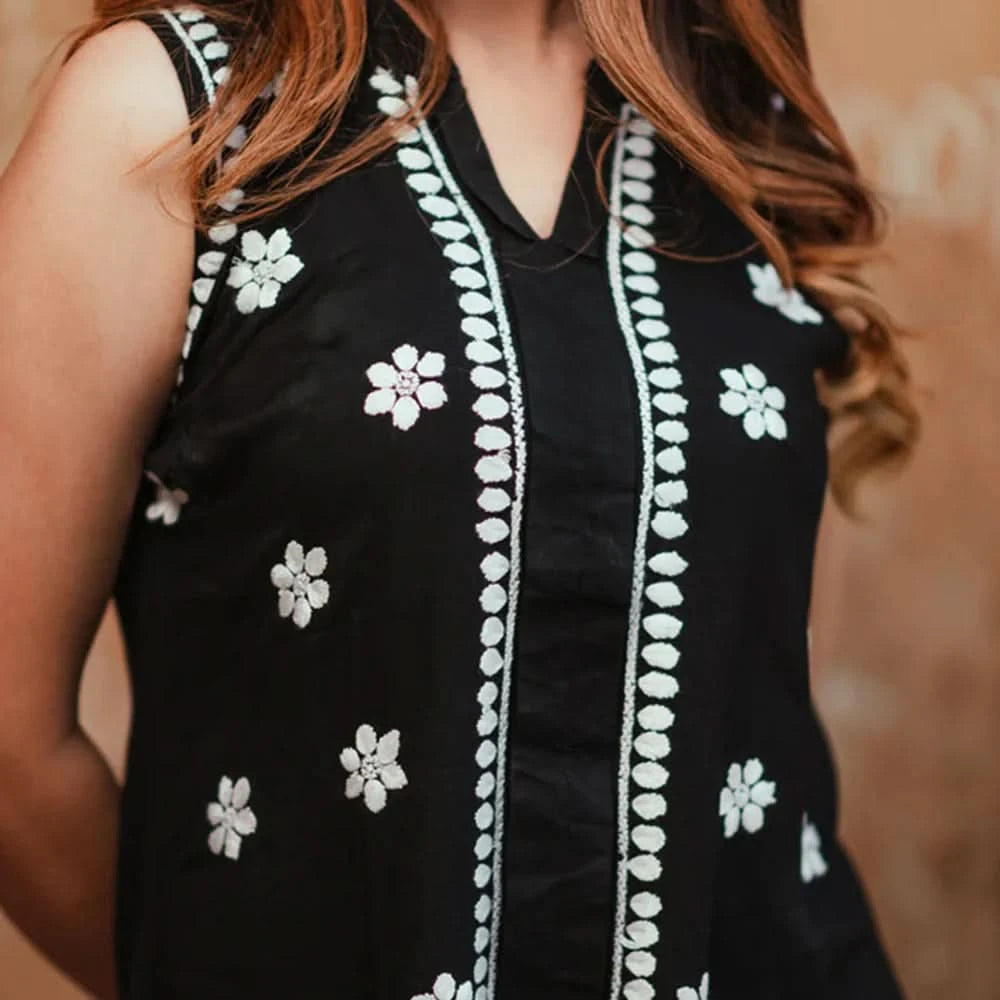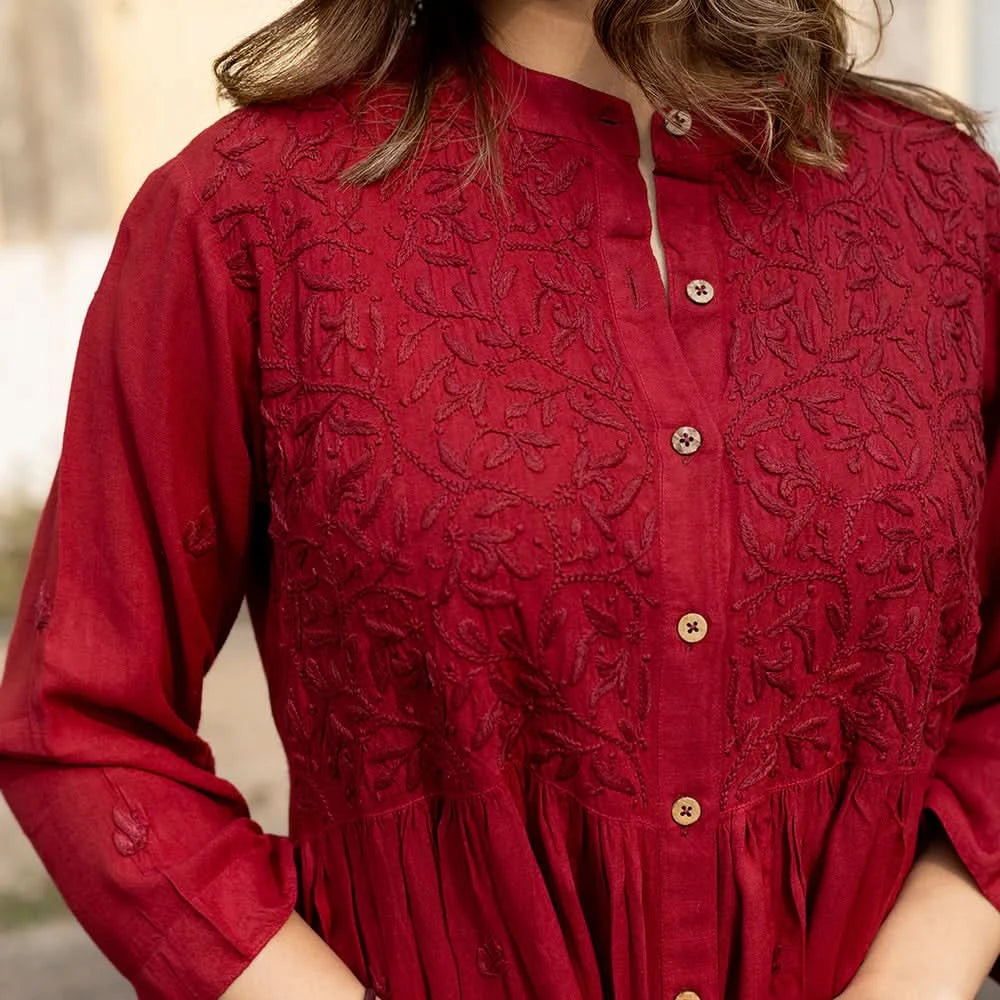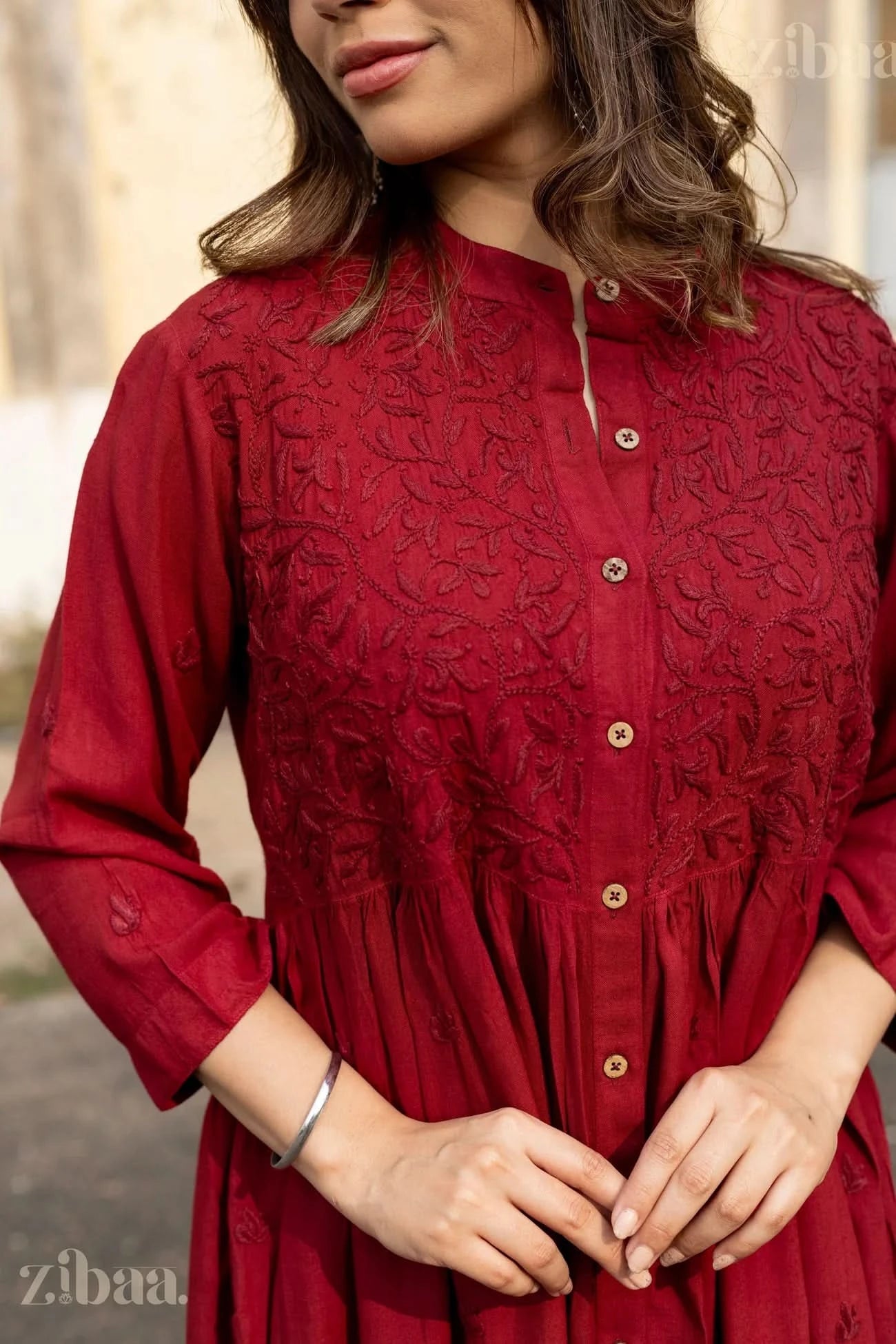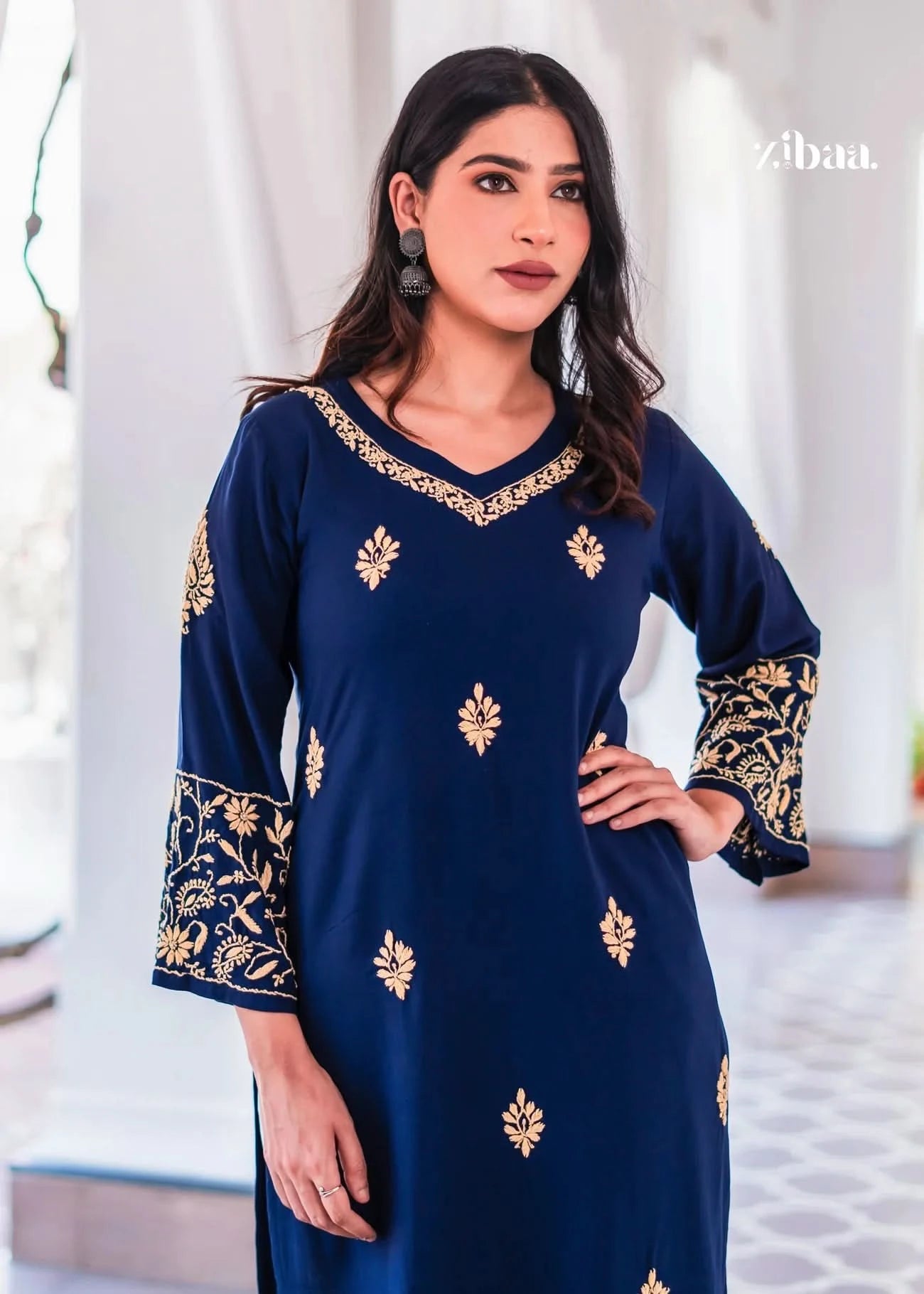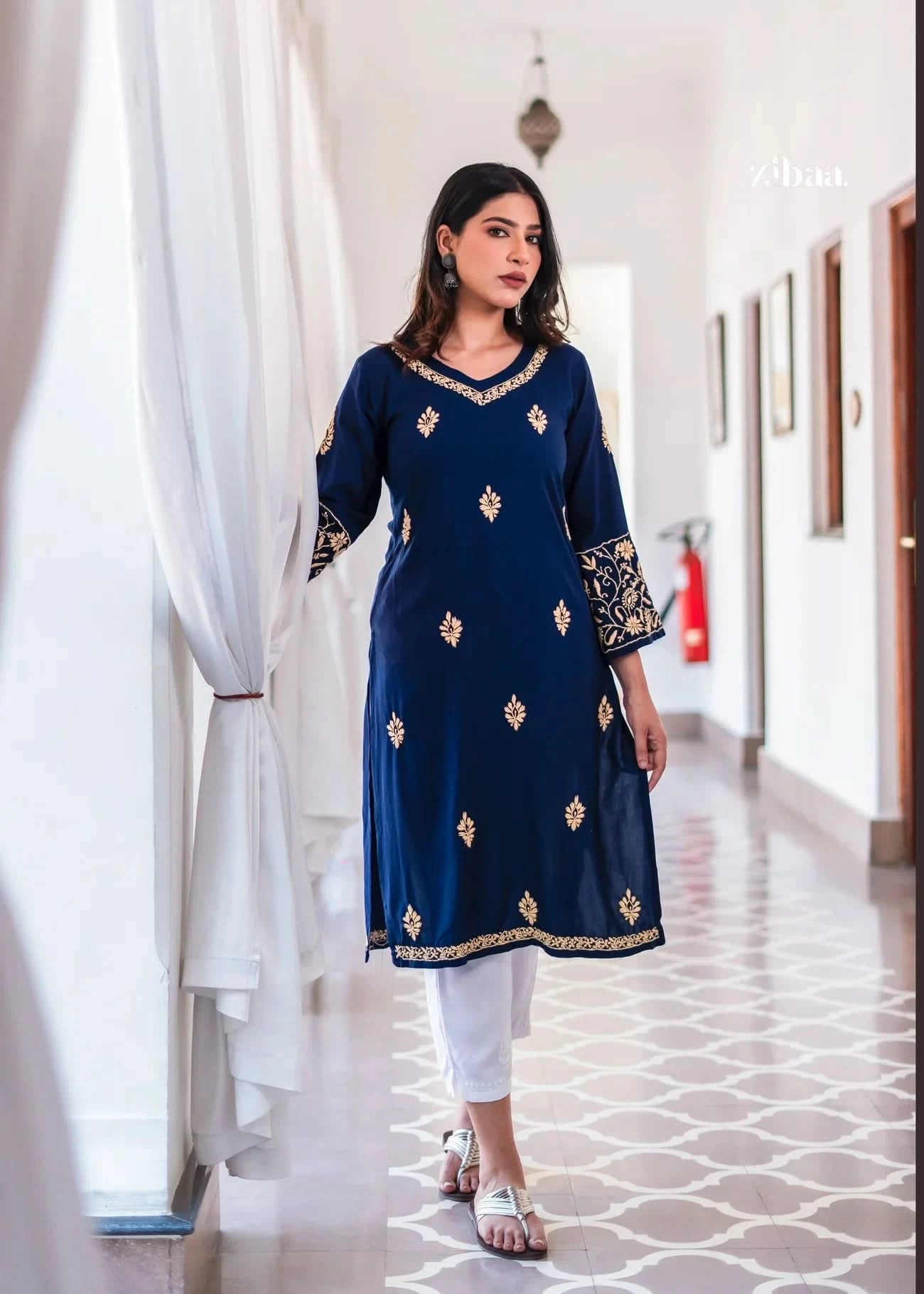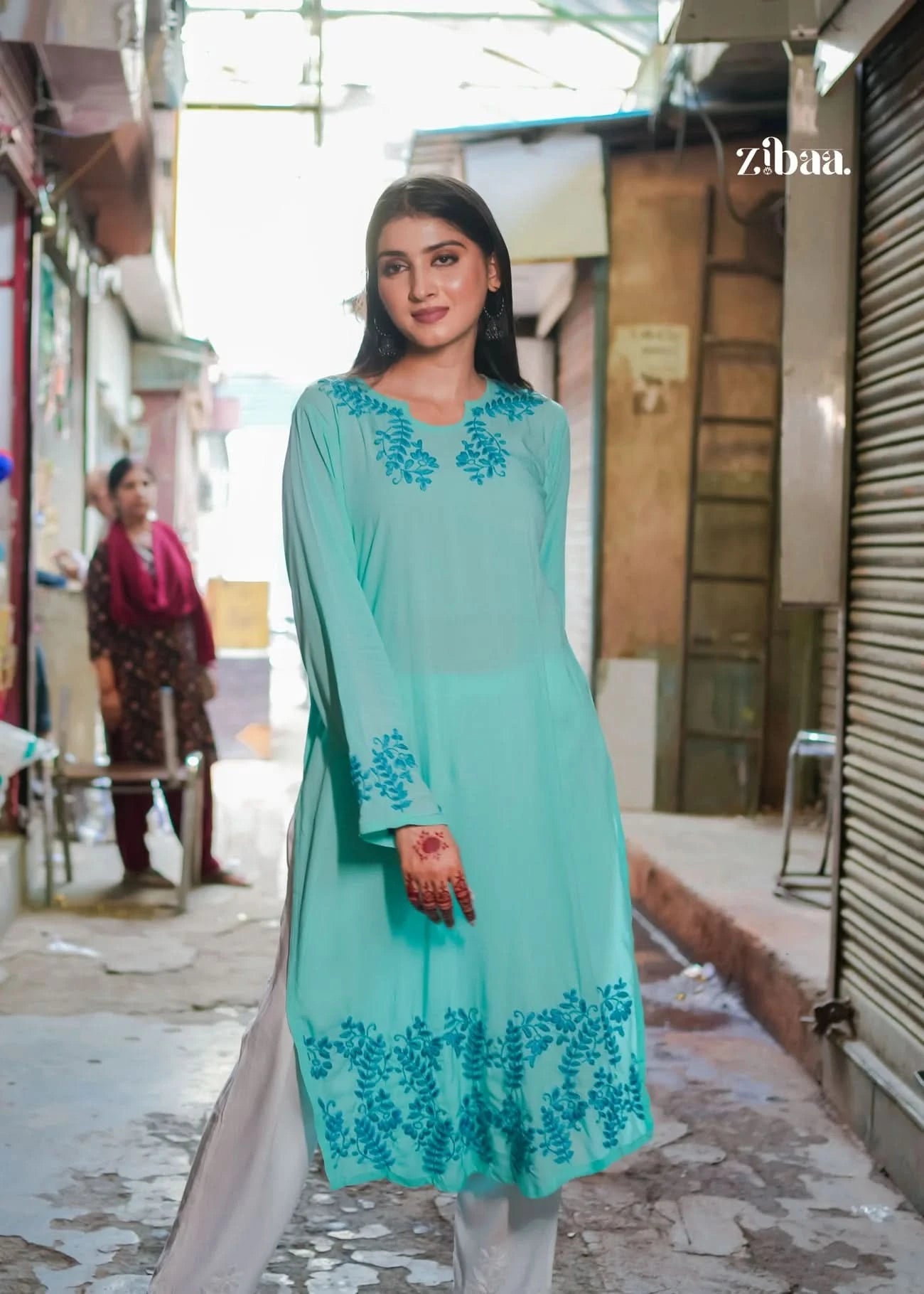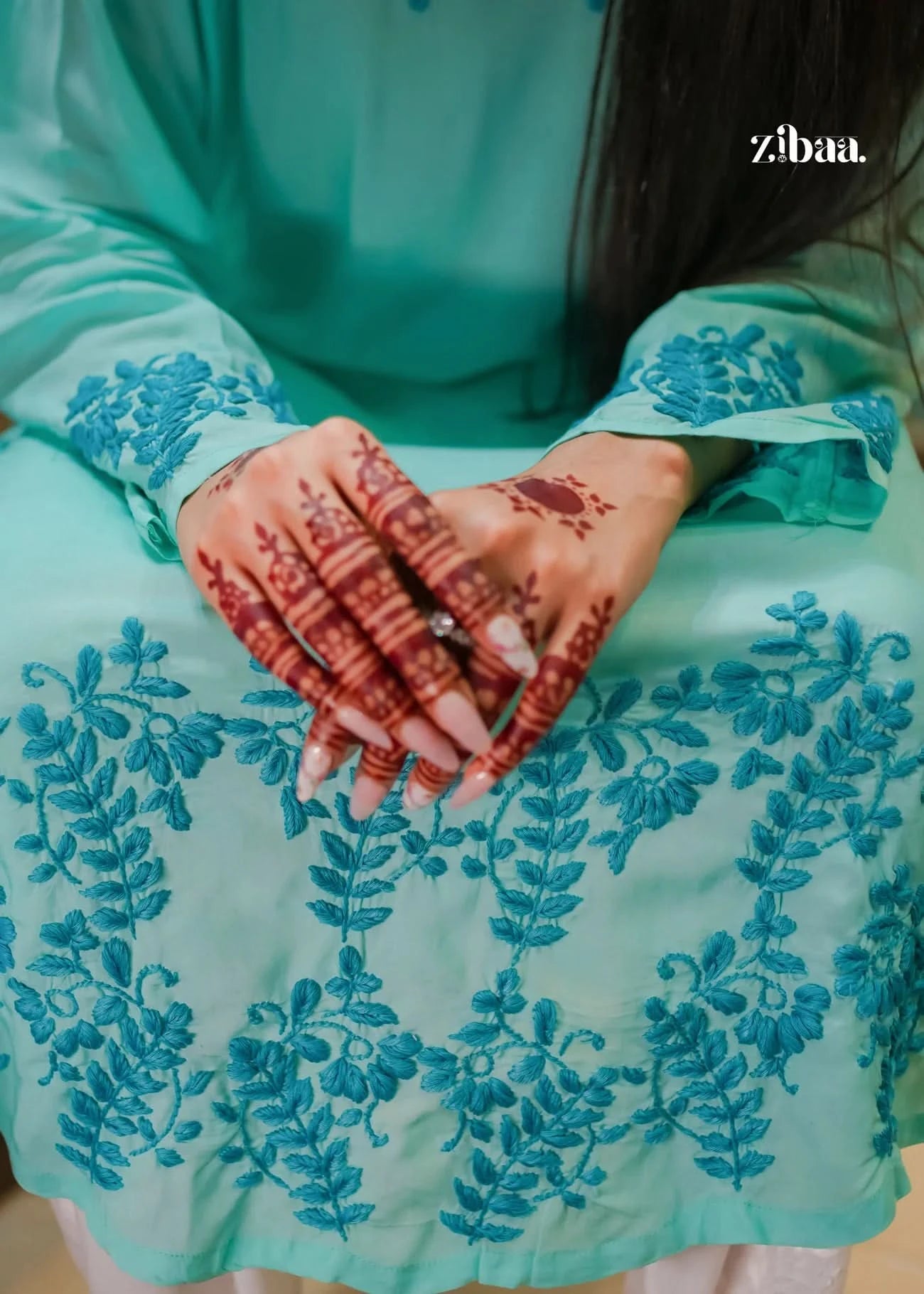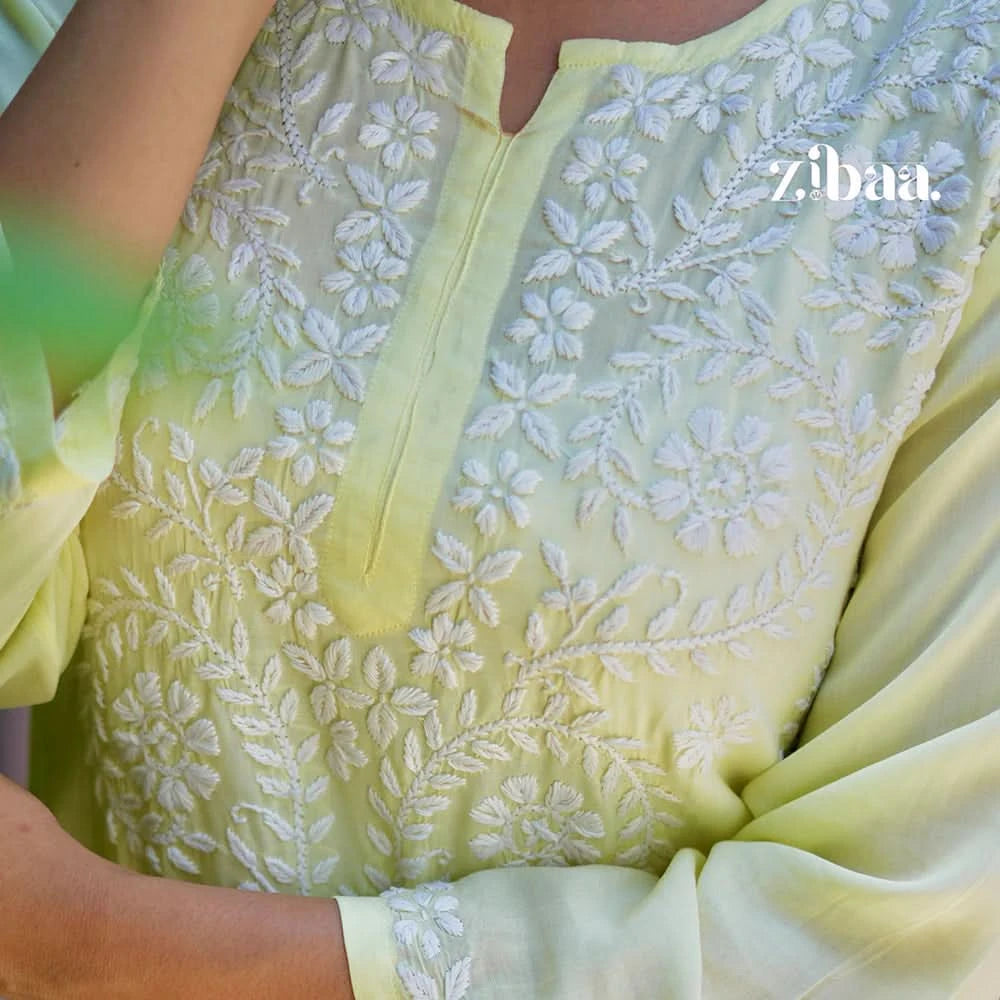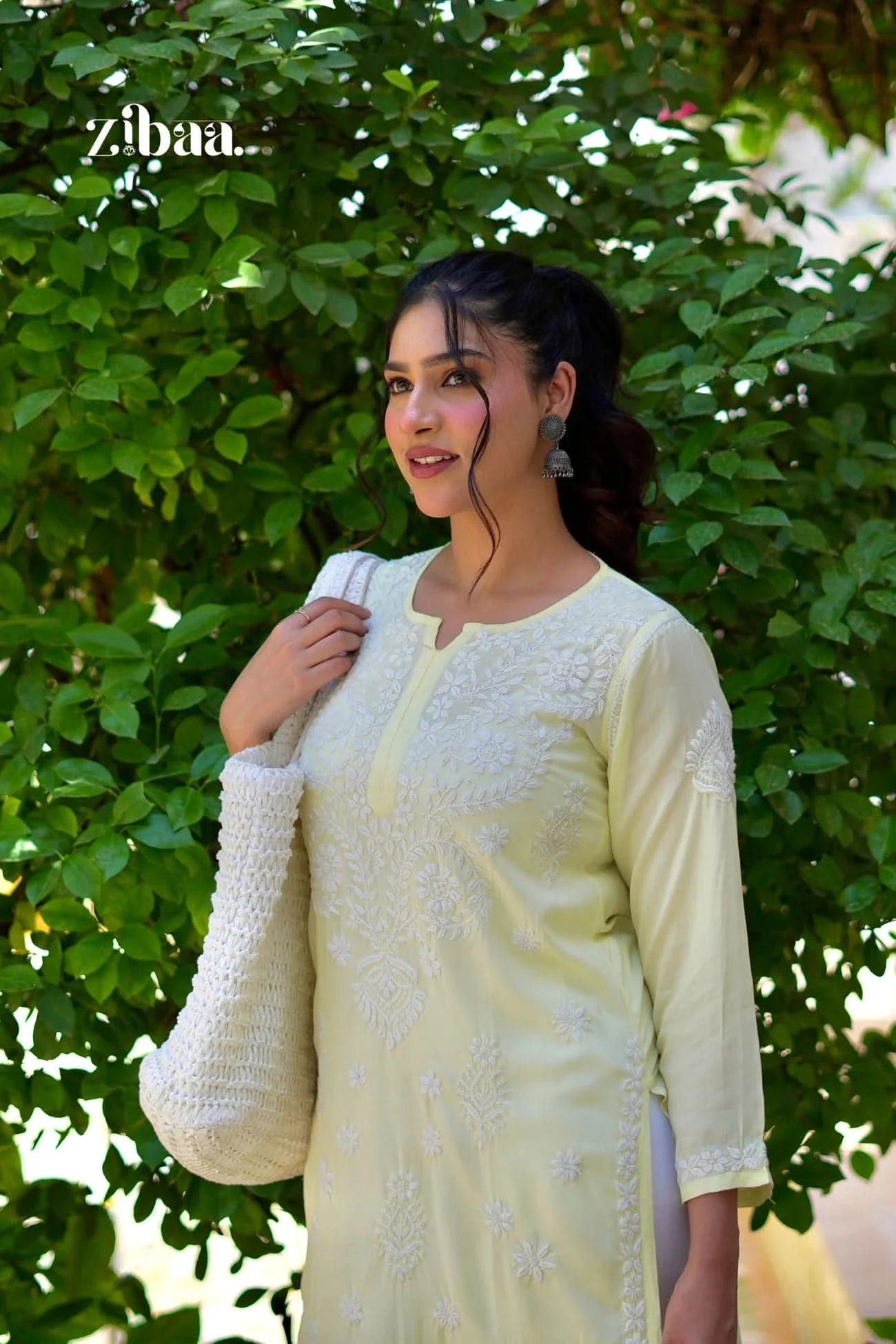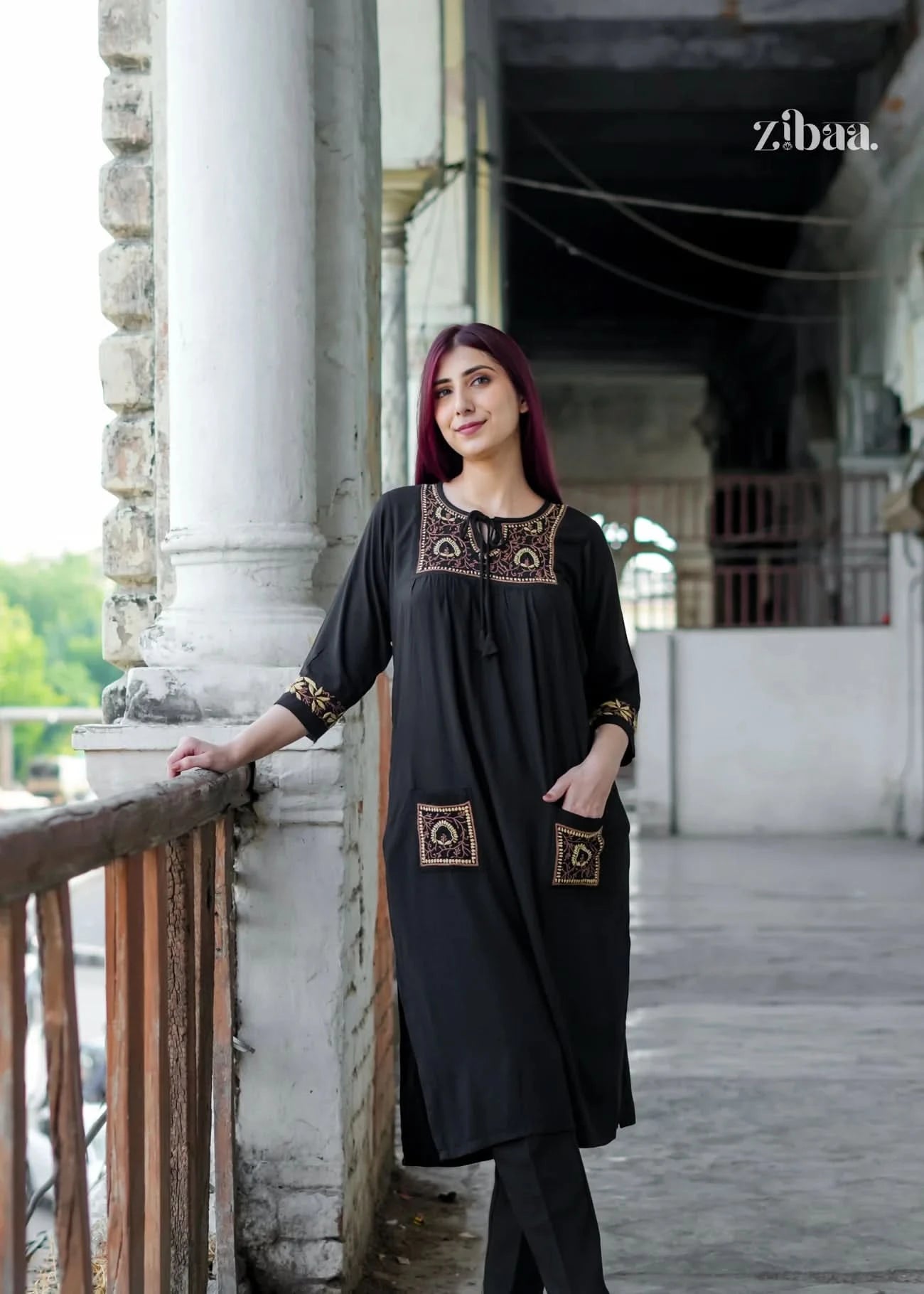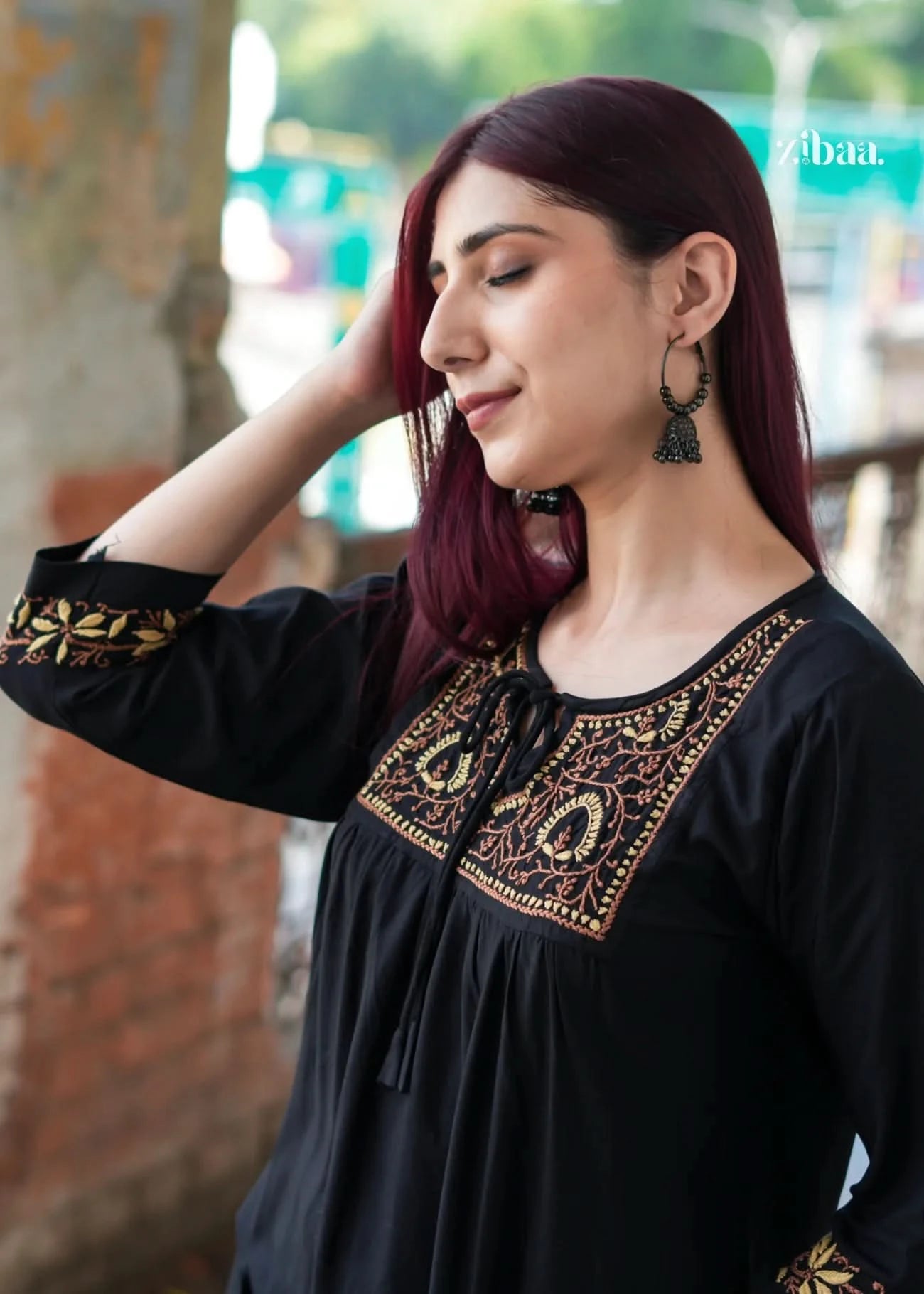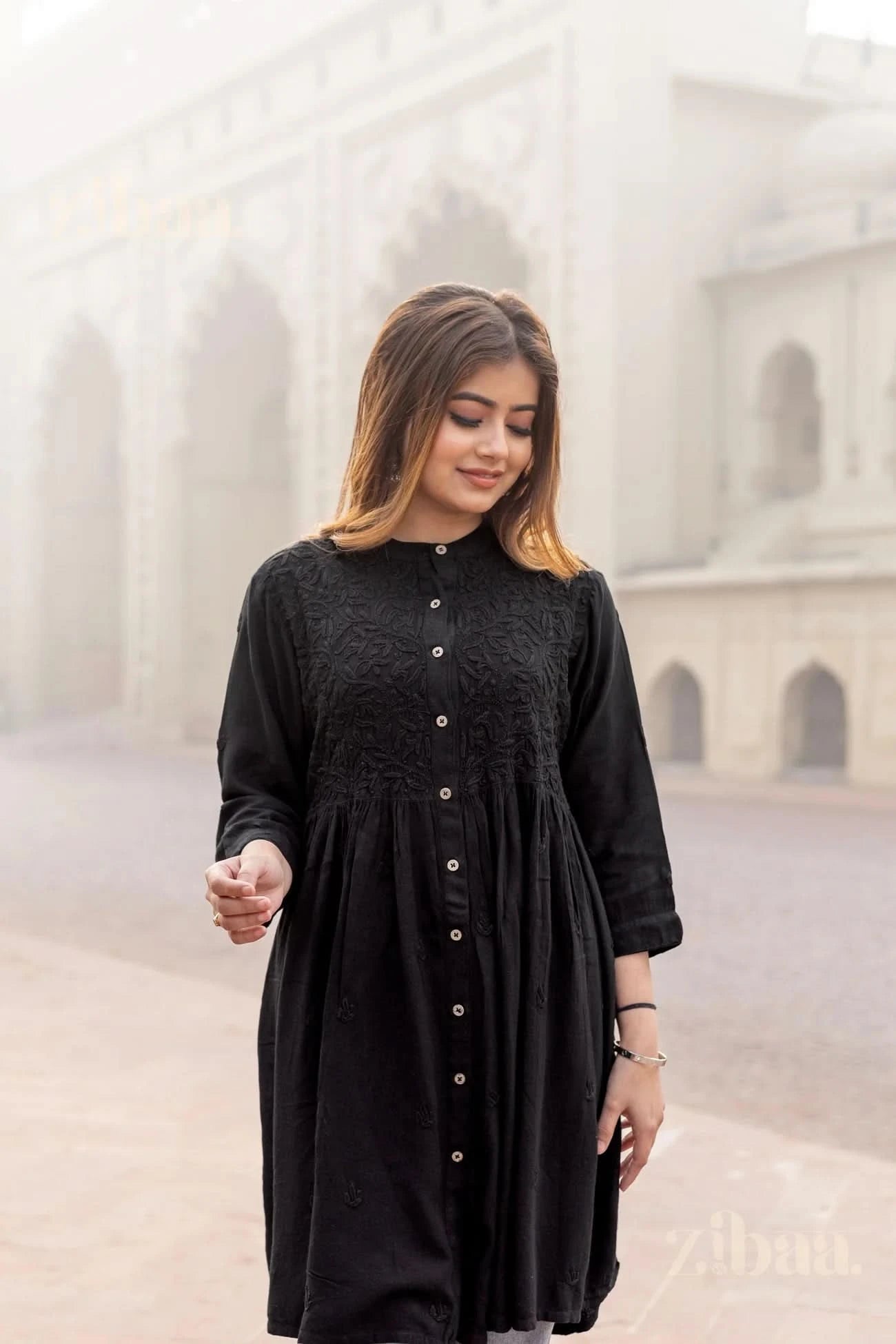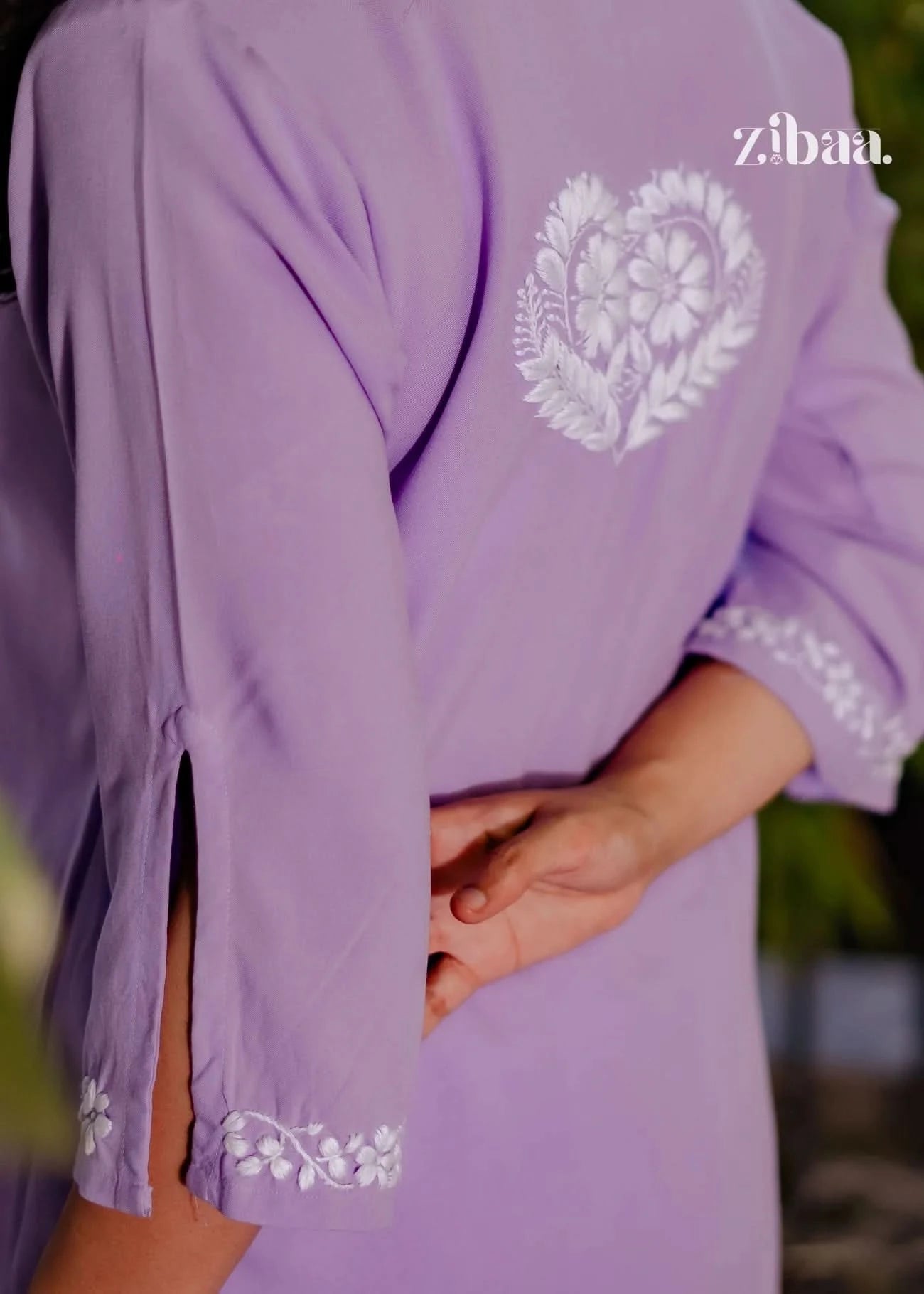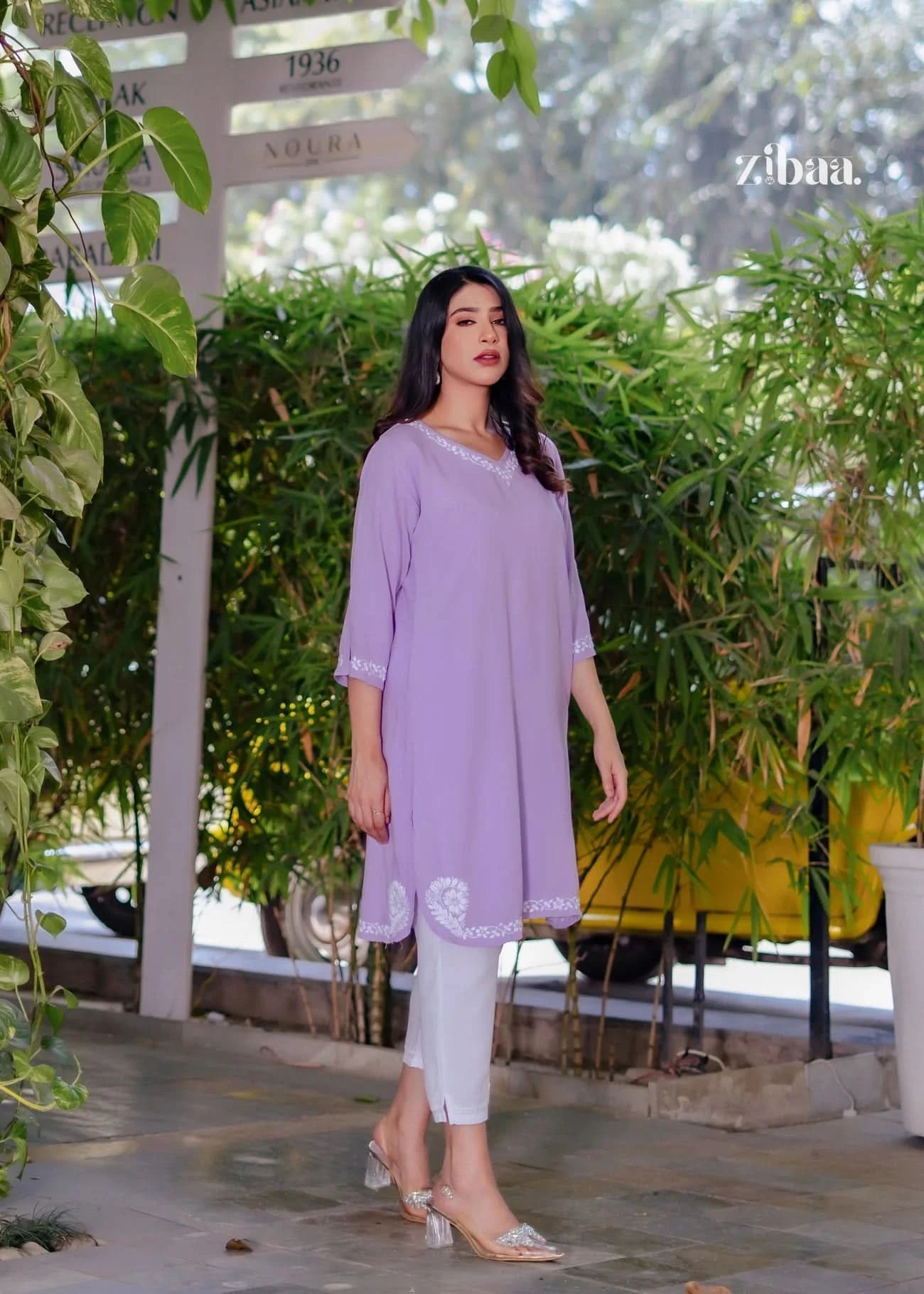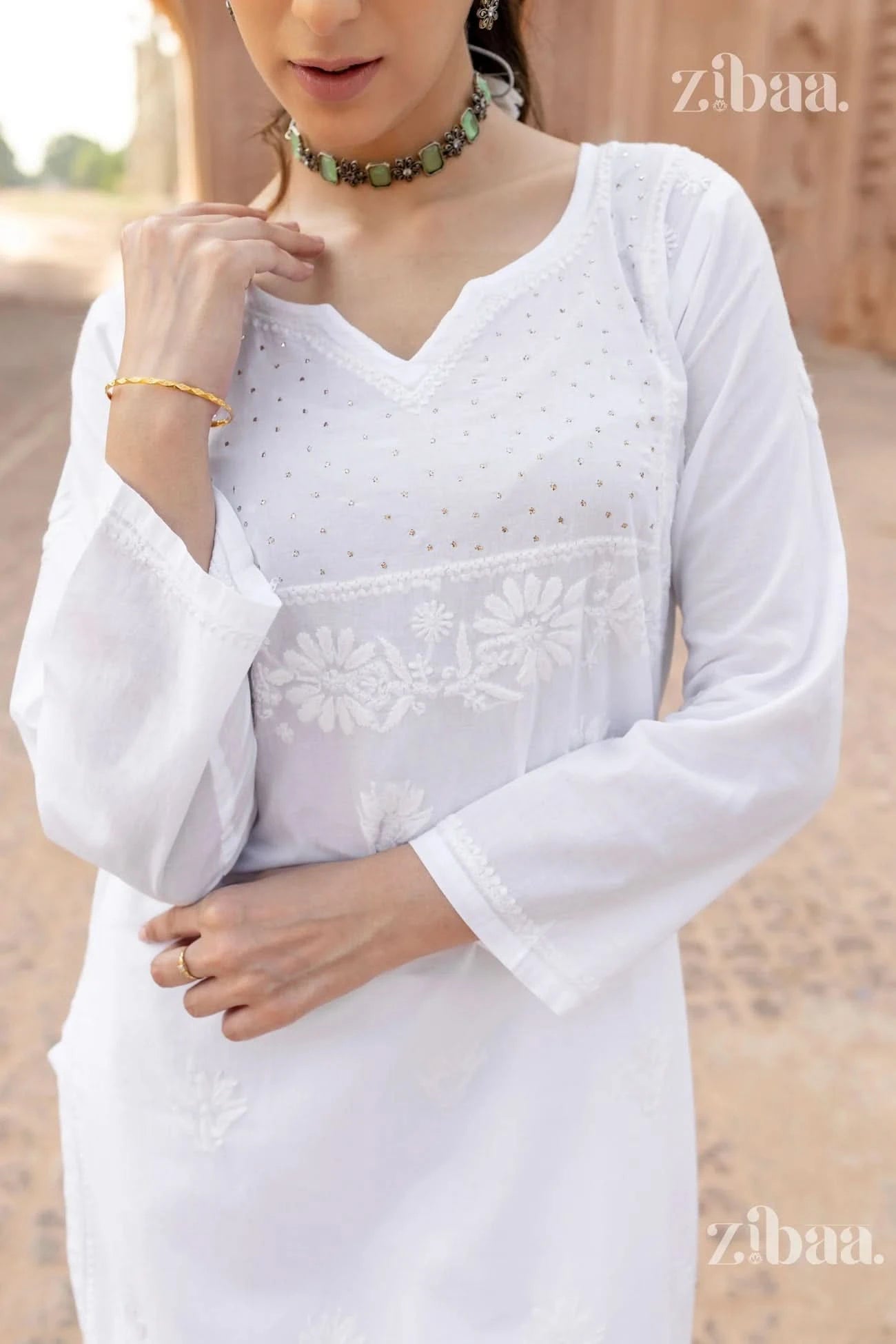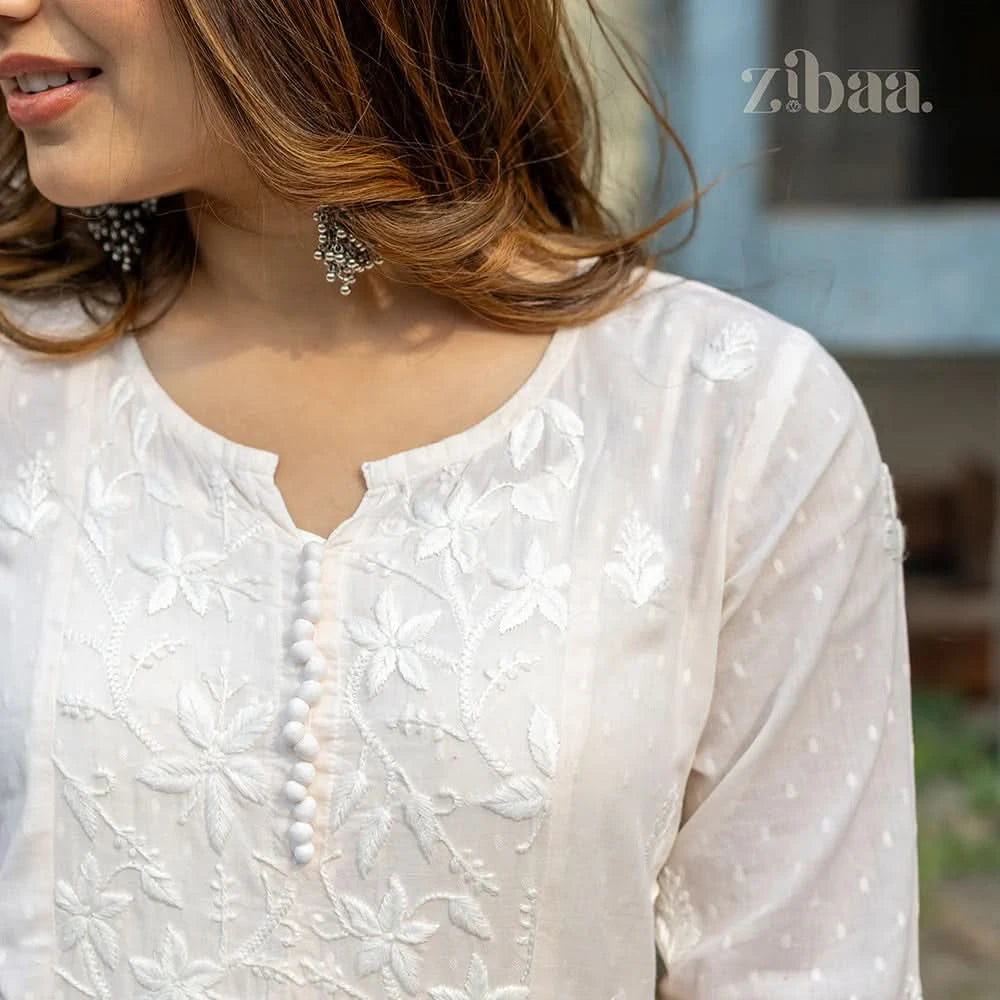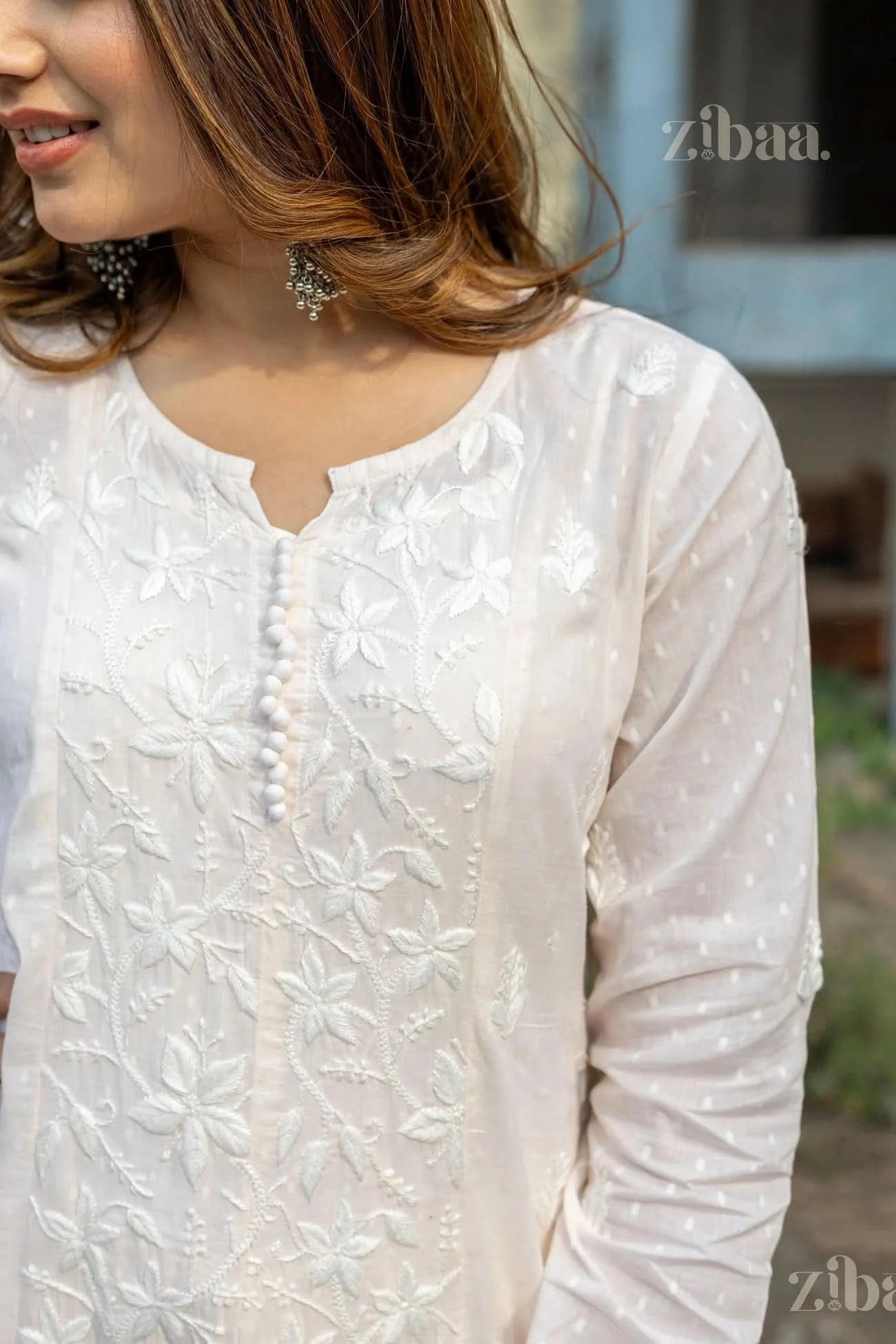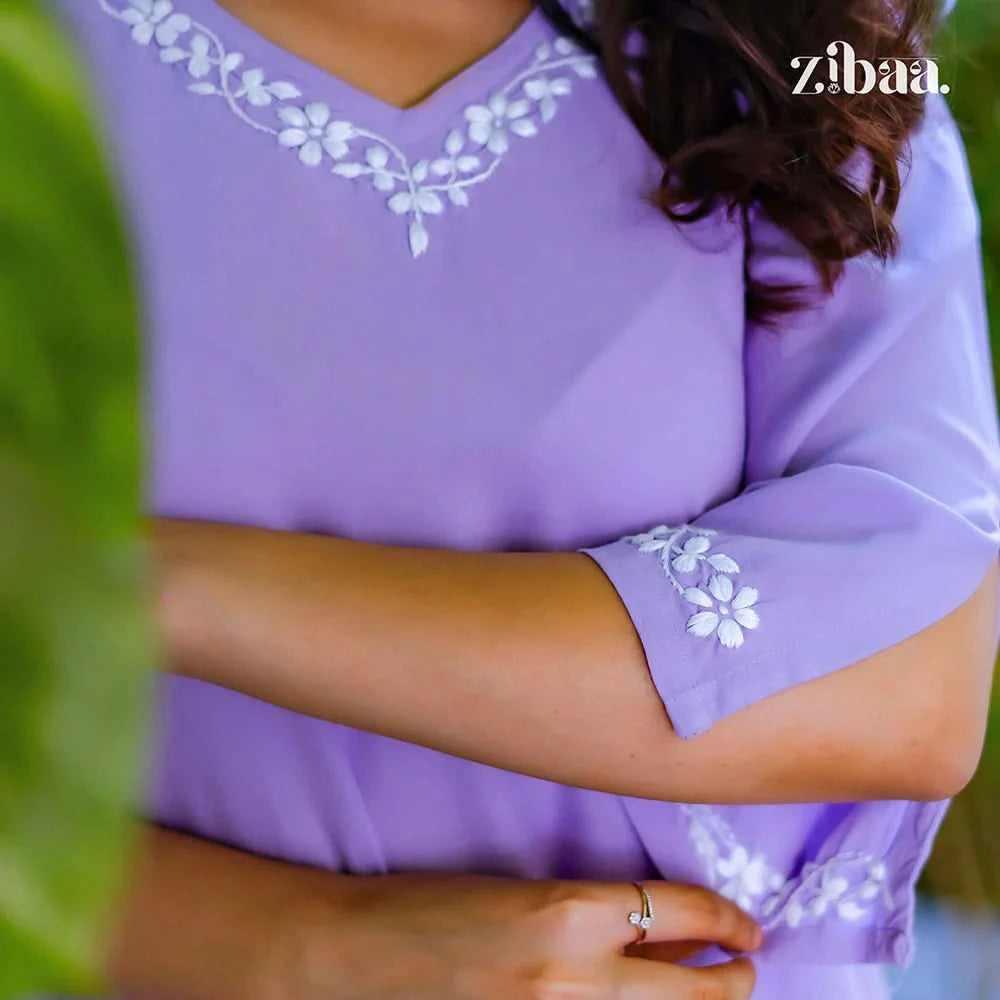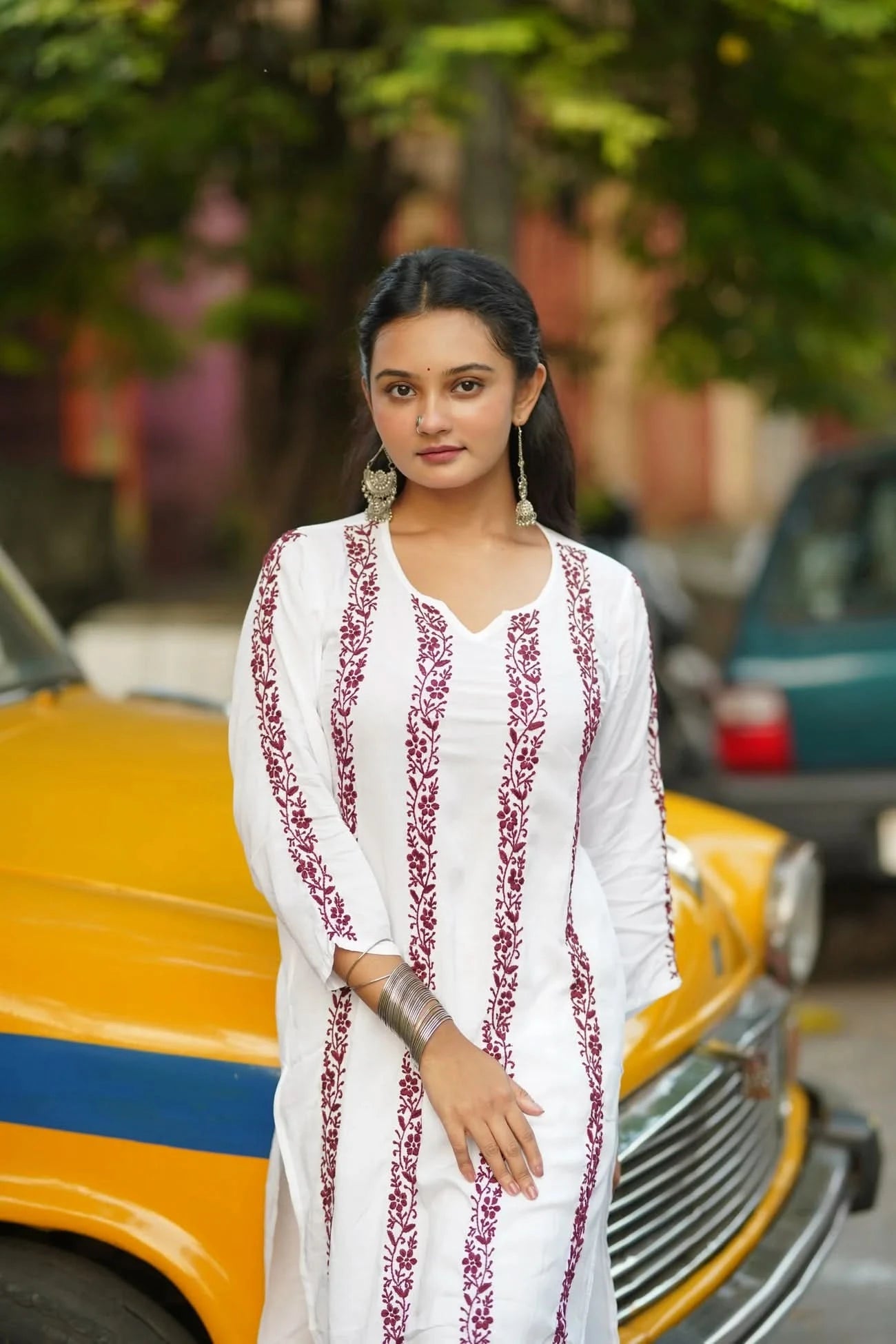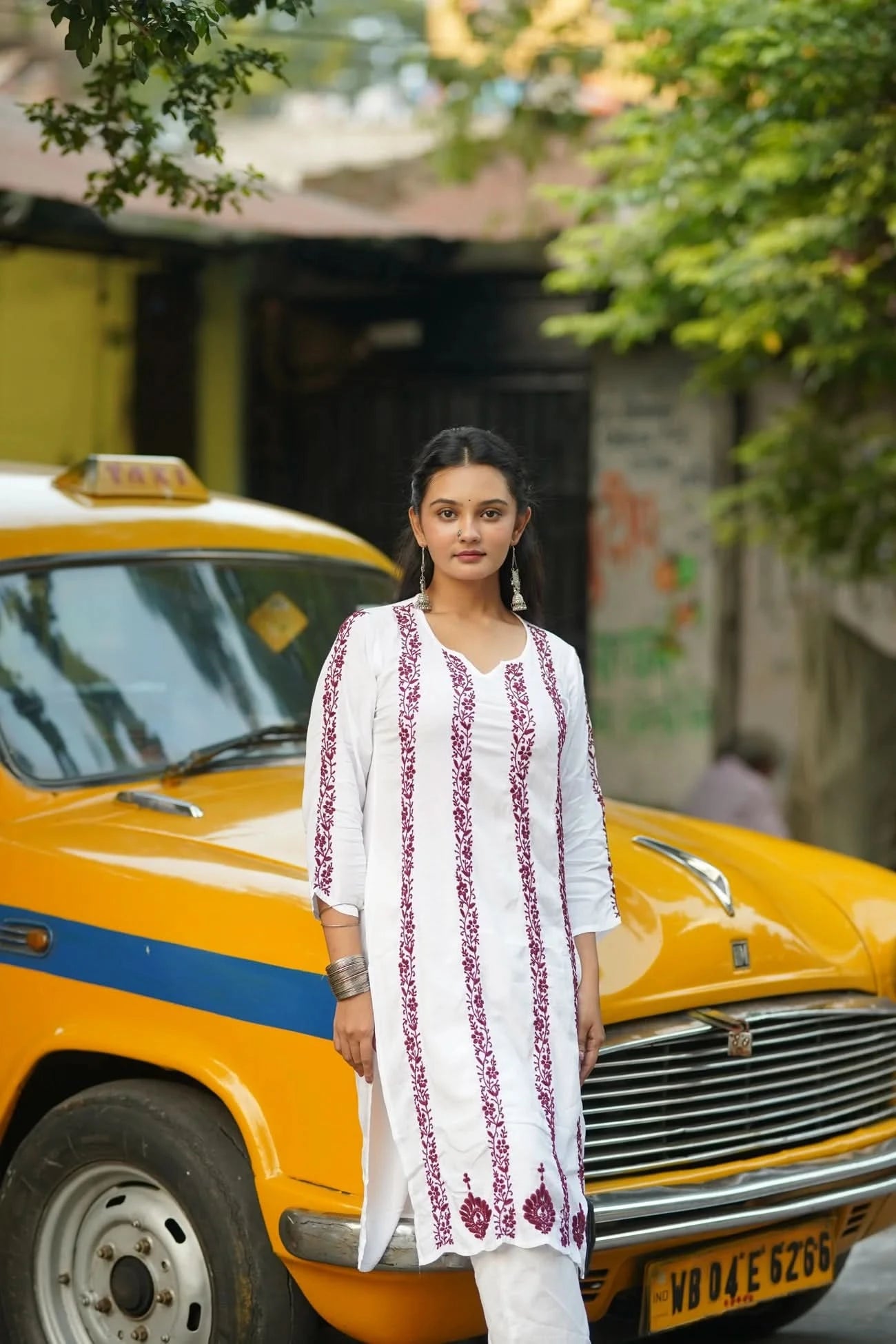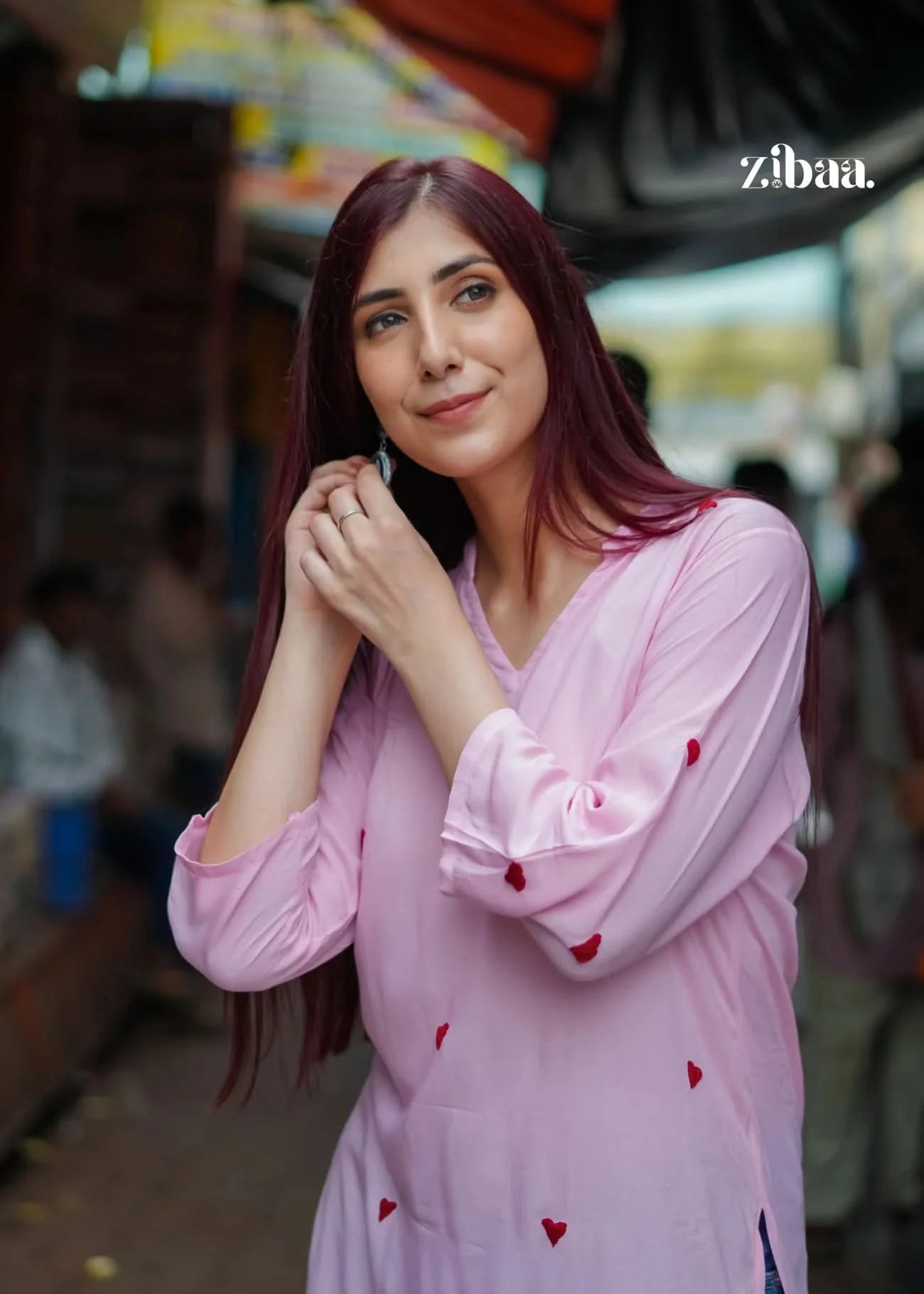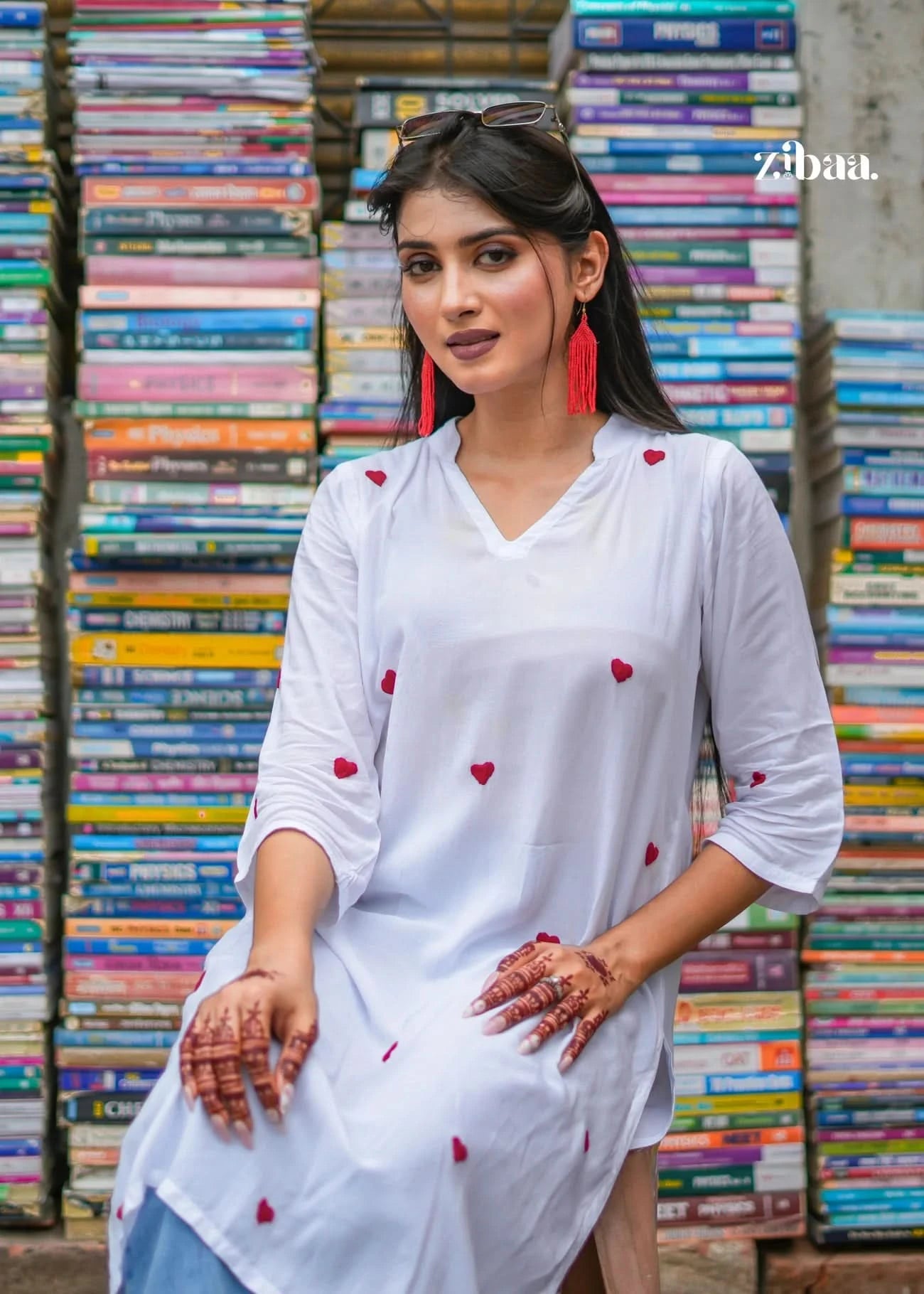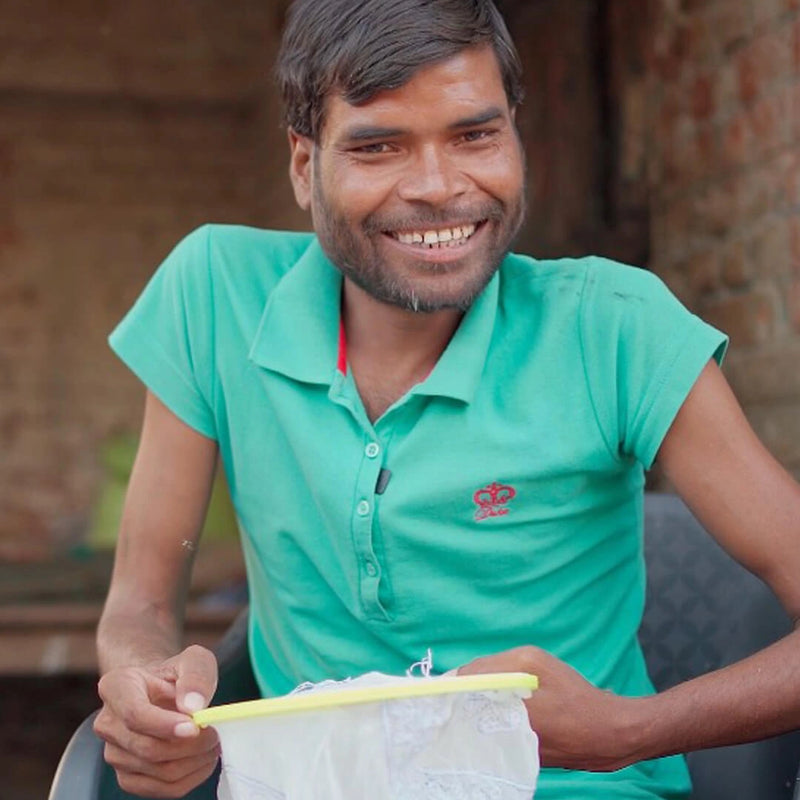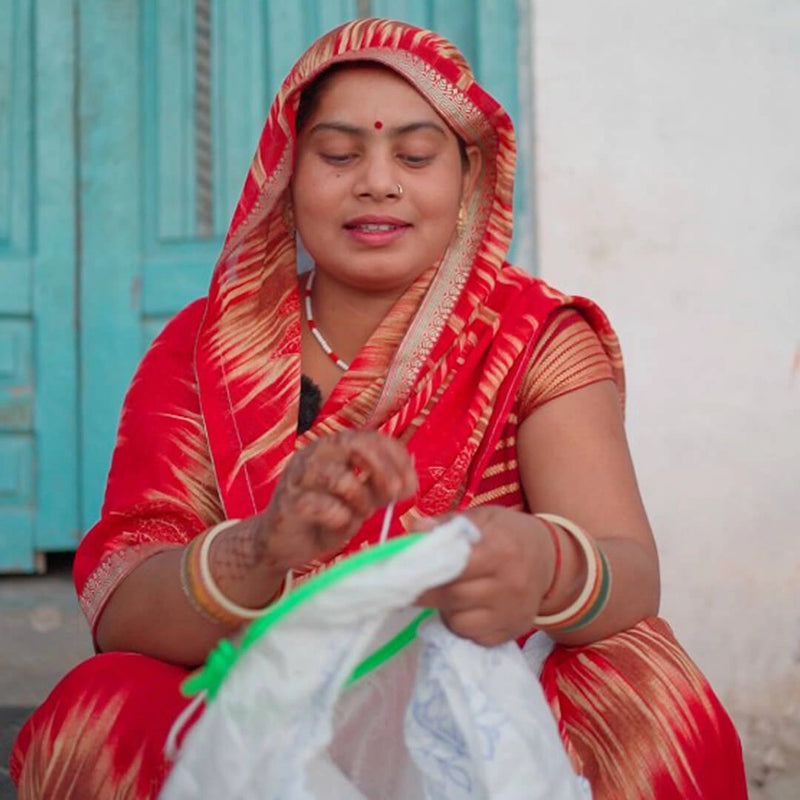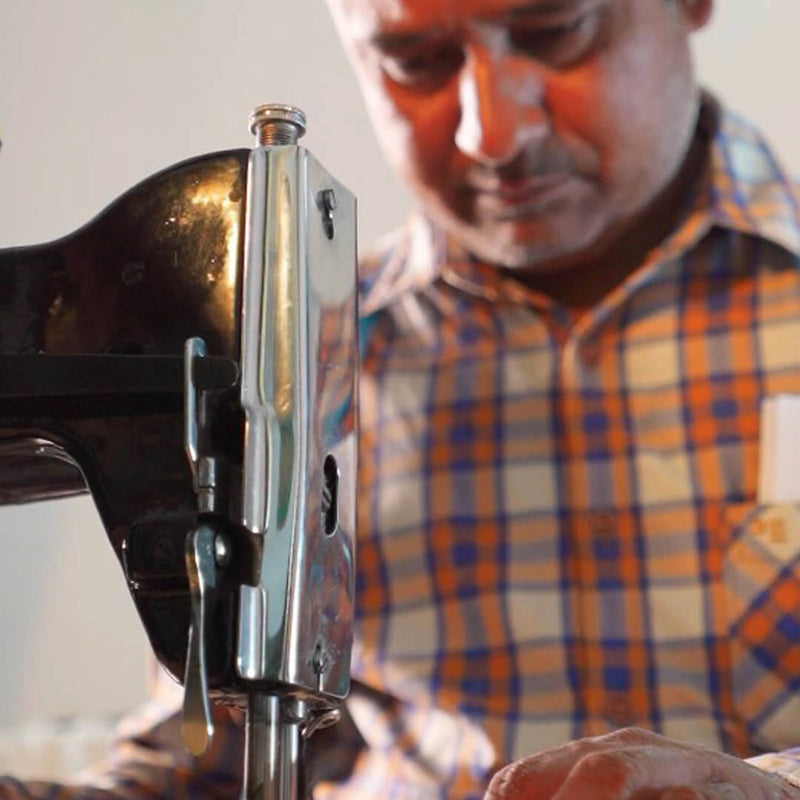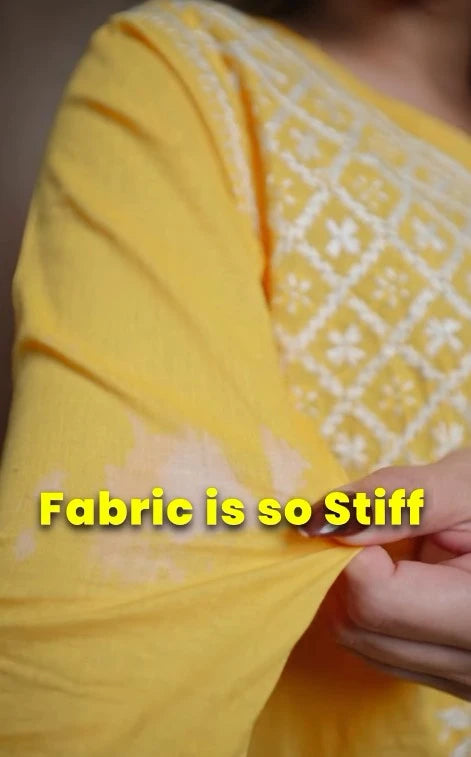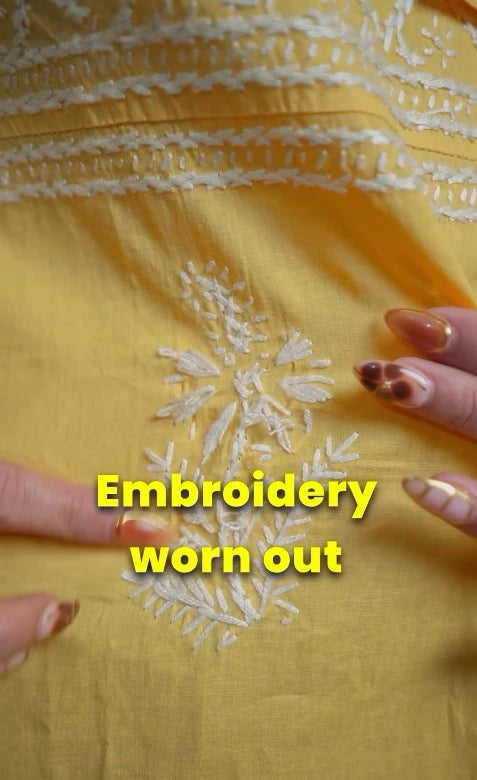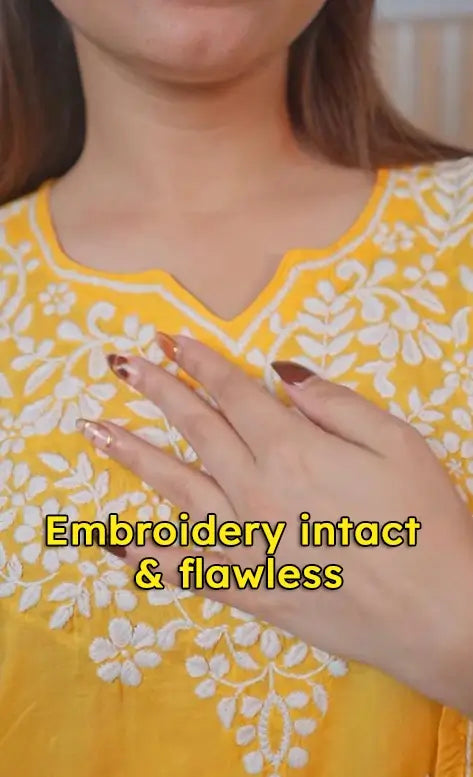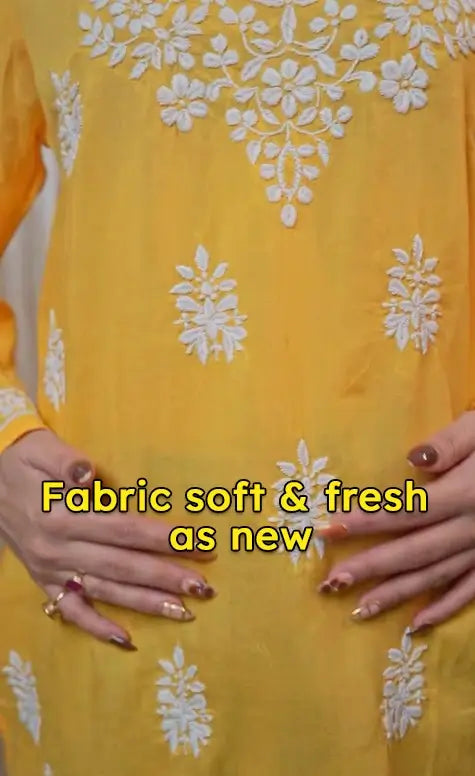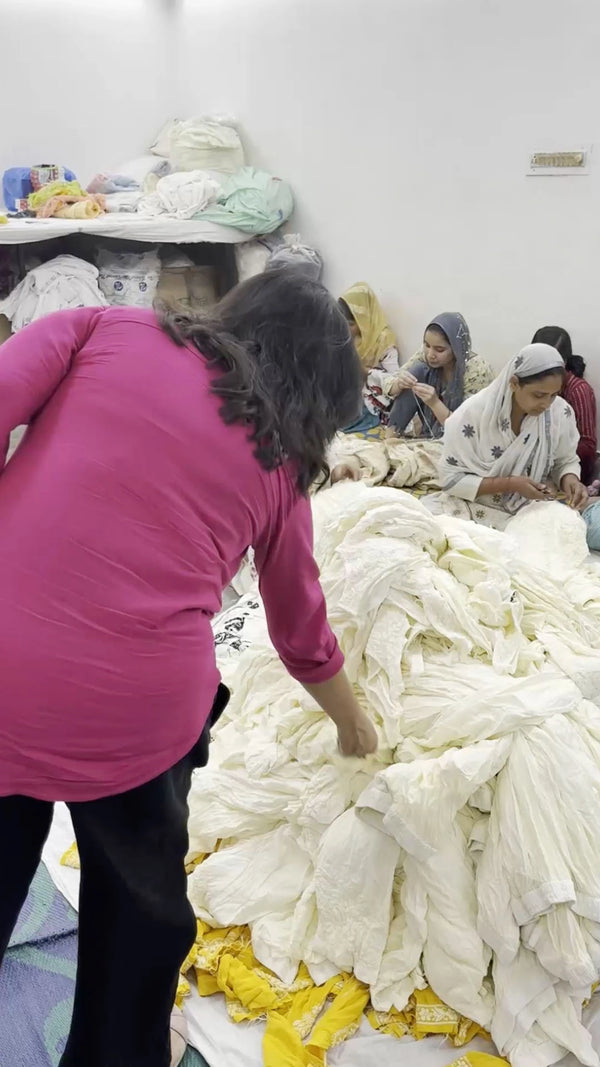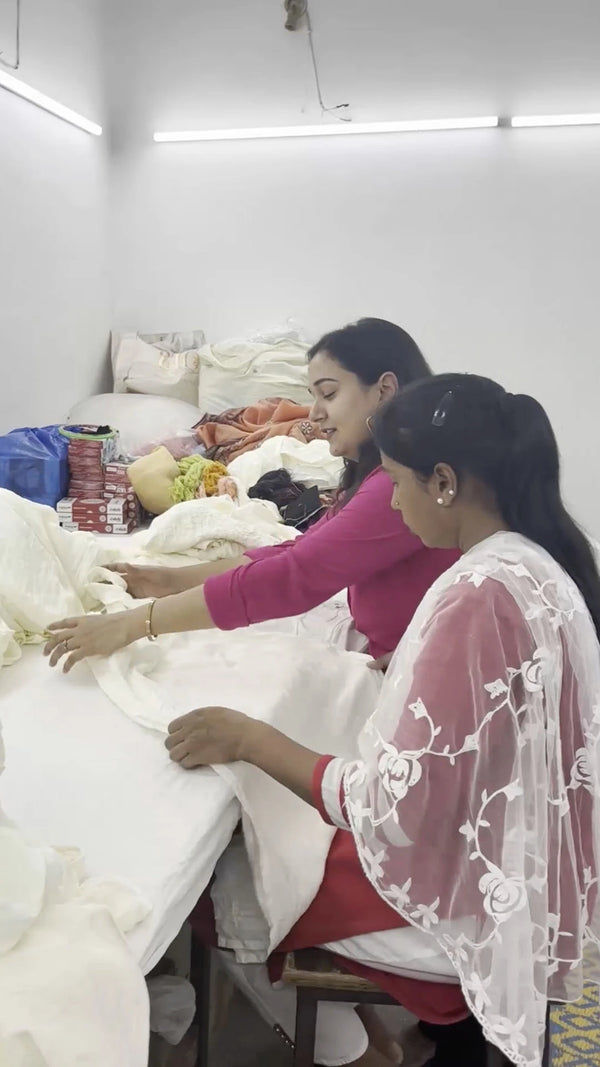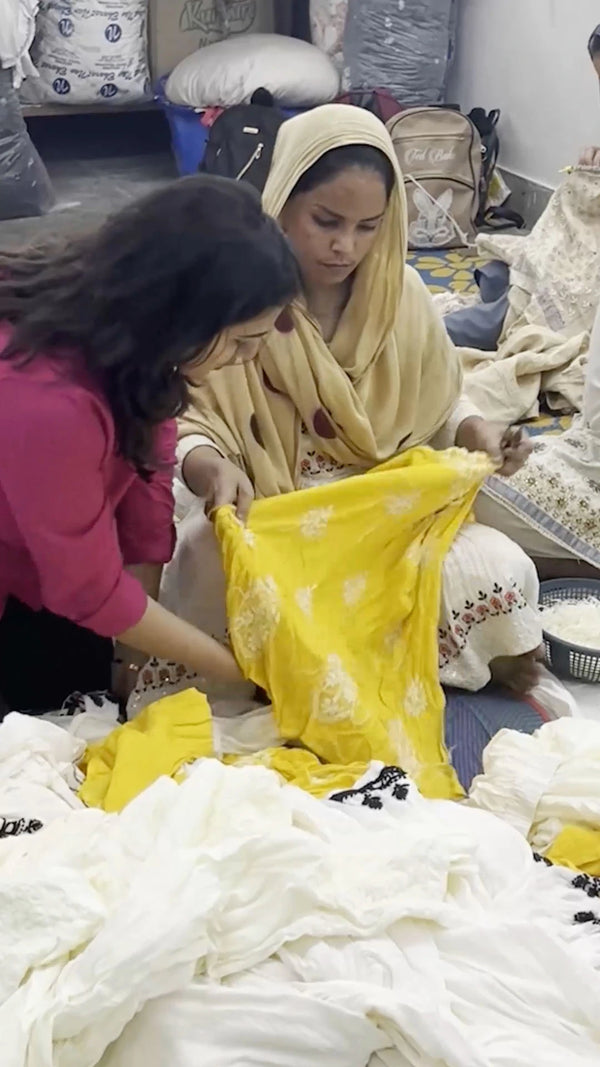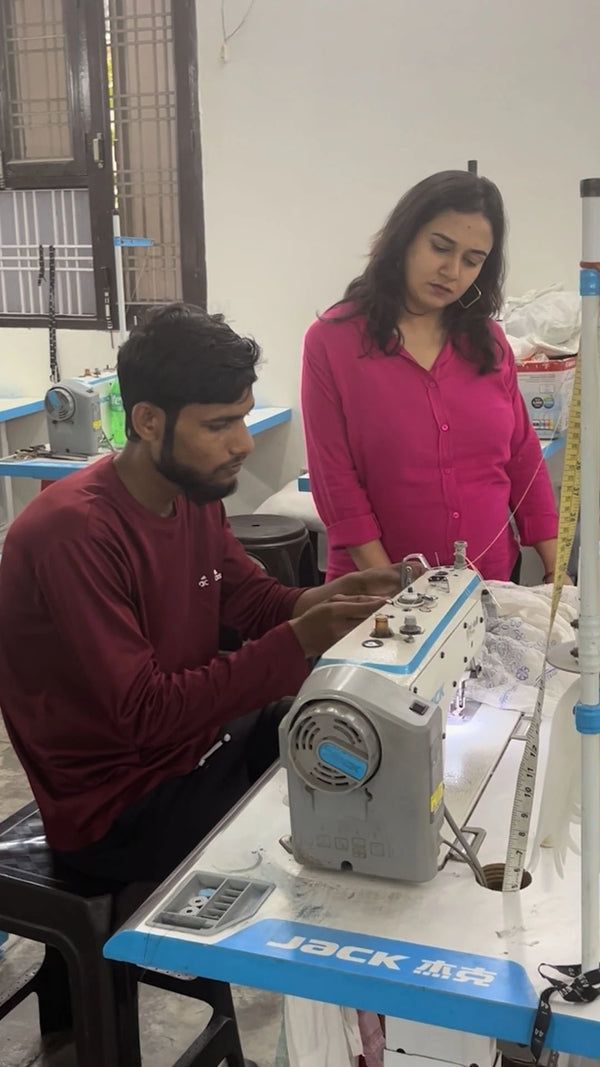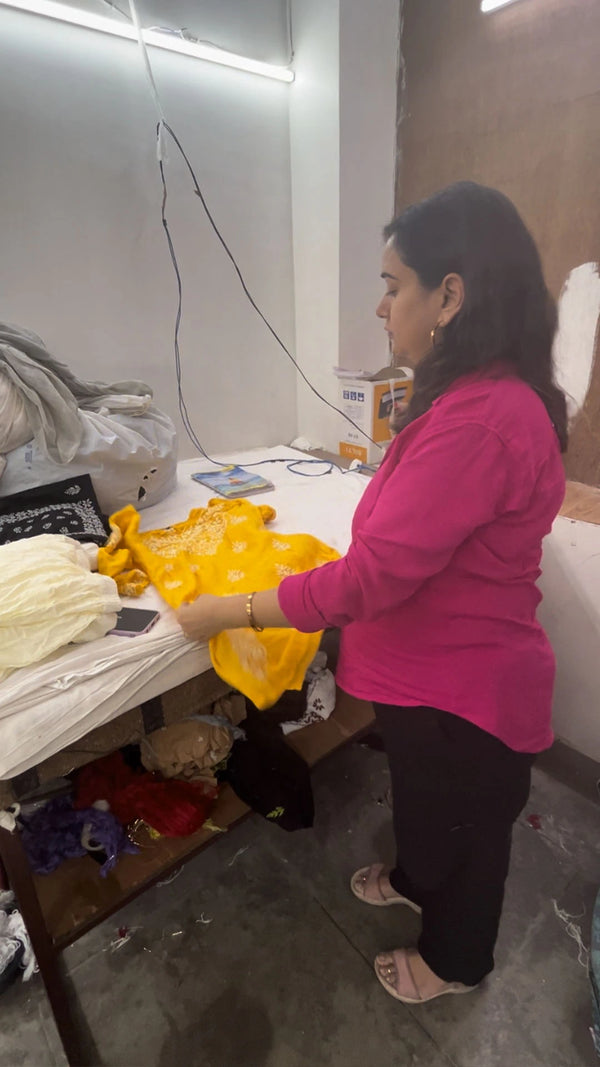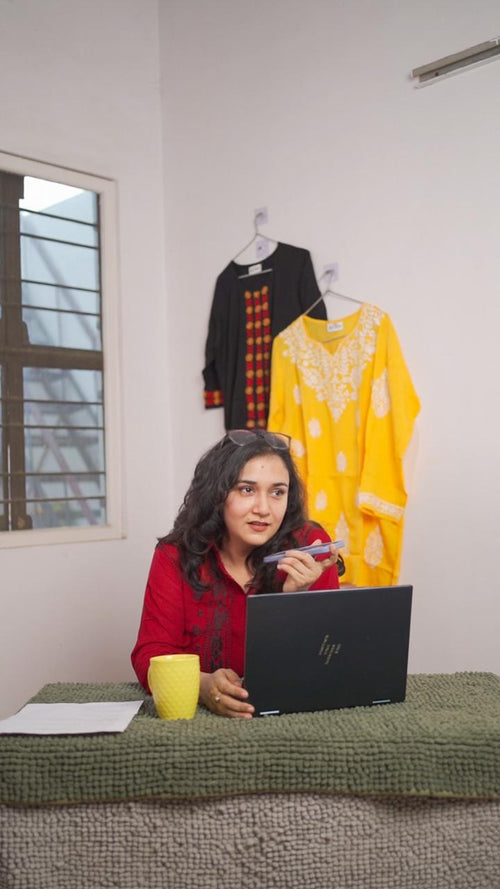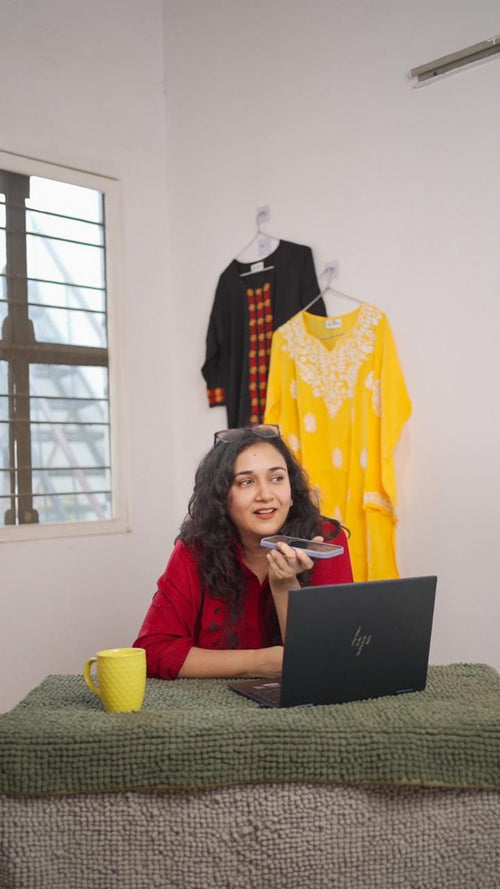Chikankari Embroidered Kurta : A Complete Human-Crafted Guide
Among India’s many textile traditions, few are as delicate and soulful as chikankari. To wear a chikankari embroidered kurta is not just to own a garment but to carry centuries of artistry and cultural heritage. This embroidery has traveled through history, adapted to changing fashions, and yet remained rooted in its timeless charm.
When someone touches a chikankari embroidered kurti for the first time, the reaction is almost universal is awe at how thread alone can create such fine, shadow-like textures. The elegance lies not in opulence but in restraint, in the poetry of each stitch.
Quick facts about Chikankari
Primary Hubs
• Lucknow, Uttar Pradesh, India
• Surrounding villages like Malihabad, Gosainganj, Chinhat, and Kaisarbagh
Scale of Work
• Over 135,000 artisans engaged in chikankari embroidery across Lucknow and nearby districts
• Majority are women working from their homes
Fabric and Materials
• Originally muslin, now also cotton, georgette, organza, chiffon, and silk blends
• Traditionally white thread, now expanded to colored threads, sequins, and beads
Cultural Recognition
• Chikankari is registered as a Geographical Indication (GI) of Lucknow
• Supported under the Uttar Pradesh government’s One District One Product scheme
Market Reach
• Local bazaars in Lucknow such as Chowk and Aminabad
• High-end designer boutiques across India
• Growing international exports
Learning Traditions
• Skills are passed down from mothers and grandmothers to daughters
• NGOs and craft schools also conduct formal training programs
Origins of Chikankari
Historical Roots
One of the most widely believed accounts attributes the introduction of chikankari to Empress Noor Jahan, wife of Mughal emperor Jahangir. Skilled in the art of embroidery herself, she encouraged artisans to practice this subtle form of handwork. The Mughal courts, with their immense patronage for art, helped chikankari flourish.
Persian Influence
Design inspirations were drawn from Persian floral motifs, vines, and jaali-style patterns. Over time, these designs merged with Indian aesthetics, creating the unique chikankari identity we know today.
Evolution of Fabric Use
In earlier centuries, chikankari was most prominent on Dhaka muslin, a fabric so fine it was almost transparent. Later, as muslin became scarce, artisans adapted to cotton, voile, silk, chiffon, and georgette. This adaptability has been key to chikankari’s survival across generations.
Types of embroidery stitches used in Chikankari
Chikankari is famous for its variety of stitches. Each stitch has a purpose — to create texture, to add depth, or to form shadows on the fabric. More than 30 stitches exist, but only 6 to 7 are commonly used today.
Most Common Chikankari Stitches
-
Tepchi – A simple running stitch, often used as an outline.
-
Bakhiya – Known as shadow work, done from the reverse side of the fabric to create a translucent effect.
-
Phanda – Small knots, often used to form flower buds.
-
Murri – A rice-shaped stitch, used in floral motifs.
-
Jaali – Creates a net-like pattern resembling lace.
-
Hool – A detached eyelet stitch, perfect for petals.
Other Less Common but Beautiful Stitches
• Ghaspatti for leaves and grass
• Keel Kangan for geometric patterns
• Khatao for appliqué style designs
Common stitches and its features
| Stitch Name |
Appearance |
Common Use |
| Tepchi |
Simple line |
Outlines and borders |
| Bakhiya |
Shadow-like |
Filling motifs |
| Phanda |
Small knots |
Flower buds |
| Murri |
Rice grain shapes |
Floral centers |
| Jaali |
Net-like |
Decorative panels |
| Hool |
Eyelet holes |
Petals and florals |
The process of making a Chikankari Embroidered Kurta
Creating a chikankari kurta is a labor-intensive process that requires coordination among multiple artisans.
Step-by-Step Process
-
Designing – The motif is created on tracing paper.
-
Block Printing – Wooden blocks dipped in washable blue ink transfer the design onto fabric.
-
Embroidery Work – Artisans use needle and thread to hand-embroider along the printed lines.
-
Washing – Once complete, the fabric is washed to remove the traced design.
-
Finishing – Ironing and trimming finalize the garment for sale.
Time Taken
Depending on the complexity, one chikankari embroidered kurta can take anywhere from 7 days to 3 months to complete.
Cultural impact of Chikankari
Symbol of Lucknow’s Identity
Chikankari is synonymous with Lucknow’s cultural fabric. It is as representative of the city as its kebabs, poetry, and classical dance.
Role in Festivals and Weddings
• Worn by brides in pastel hues for subtle elegance
• Preferred by grooms for sherwanis and kurta-pajamas
• Gifting of chikankari garments during Eid and Diwali is a long-held tradition
Contribution to Handloom Economy
Chikankari sustains thousands of families in rural and urban Uttar Pradesh. Its recognition under the GI tag has also boosted tourism and heritage pride.
Villages and areas where Chikankari is practiced
Important Craft Clusters
-
Malihabad – Famous for its mango orchards and strong chikankari community
-
Gosainganj – Home to many families where men farm while women embroider
-
Chinhat – Known for large-scale tracing and embroidery units
-
Chowk and Aminabad (Lucknow city) – Main commercial markets where artisans sell finished products
-
Kaisarbagh and Hardoi Road – Localities with artisan clusters specializing in finer stitches
Human story behind the art
Livelihood and Dependence
For thousands of families, chikankari is the primary source of income. Women, especially from marginalized communities, balance household duties with embroidery work. It gives them financial independence and dignity.
Scale of Artisanship
According to government and NGO estimates, around 1.3 lakh to 1.5 lakh artisans are engaged in chikankari across Uttar Pradesh. A large majority are women who stitch from their homes.
Challenges Faced by Artisans
-
Low wages compared to the time and effort invested
-
Competition from machine-made imitations
-
Lack of direct market access, forcing dependence on middlemen
-
Decline of younger generations’ interest due to uncertain earnings
Impact on Livelihood
Despite challenges, chikankari continues to empower women. Many NGOs report that a skilled embroiderer can supplement household income significantly. Some designer collaborations and e-commerce platforms have also revived interest and improved artisan visibility.
Difference between Handmade and Machine made Embroidery
| Aspect |
Handmade Chikankari |
Machine Embroidery |
| Precision |
Human touch, each piece unique |
Uniform and repetitive |
| Time Taken |
Weeks to months |
Hours |
| Artistic Value |
Cultural and historical craft |
Lacks heritage value |
| Employment |
Supports rural artisans |
Limited artisan involvement |
| Durability |
Strong threadwork, lasts longer |
May wear out quickly |
Why Handmade Embroidery is better than Machine-Made Embroidery
Handmade embroidery, especially chikankari, carries with it centuries of tradition and cultural identity. Each motif and each stitch reflects not just craftsmanship but also emotion and heritage. Unlike machine embroidery, handmade work produces unique variations that add character to every kurta.
Handmade chikankari requires patience, often taking weeks or months to finish a single piece. This time investment translates into durability, as the stitches are reinforced with care. Machine embroidery, although faster, often compromises on strength, making the garment less long-lasting.
Consumers also feel a deeper connection with handmade products. When someone wears a chikankari kurti, they are not just wearing a fashion item but participating in a story of cultural preservation. Machine-made embroidery, in contrast, feels mass-produced and lacks that soul.
From a sustainability perspective, handmade chikankari aligns with the slow fashion movement. It encourages conscious buying, supports artisans, and keeps heritage crafts alive. Machine embroidery, though convenient, adds to fast fashion cycles.
For all these reasons, handmade chikankari embroidered kurta and kurti pieces remain unmatched in authenticity, artistry, and emotional value.
How people learn the art of Chikankari
Traditional Learning
Children in artisan families often begin observing their mothers or grandmothers at a young age. Slowly, they practice simpler stitches like tepchi before moving to complex work.
Community Workshops
NGOs and cooperatives conduct structured workshops, especially for women from economically weaker sections. These programs ensure the art continues to new generations.
Formal Schools
Certain craft schools in Uttar Pradesh teach chikankari alongside other textile traditions. Fashion institutes also cover chikankari in design curriculums.
Hard work involved in creating a Chikankari Embroidered Kurta
Time Commitment
• A simple kurta may take 7 to 10 days
• An intricate bridal piece can take 3 months
Collaboration Required
• Designers create motifs
• Printers trace patterns
• Embroiderers stitch by hand
• Washers and finishers complete the garment
Effort per Garment
Every chikankari embroidered kurta involves 5 to 6 artisans. The collective effort ensures both beauty and authenticity.
Why a Chikankari kurta is special?
-
Every piece is handmade and unique.
-
It carries Mughal and Persian heritage.
-
It sustains artisan livelihoods.
-
It adapts beautifully to modern fashion.
-
It represents sustainable slow fashion.
While chikankari embroidery is often celebrated through the timeless kurta, its versatility extends far beyond. Skilled artisans also create chikankari short kurti that blend tradition with modern cuts, delicate chikankari tops that pair effortlessly with denims or skirts, elegant chikankari suits for festive occasions, and flowing chikankari dresses that combine heritage with contemporary fashion. This variety shows that chikankari is not confined to one garment but is a living art form that adapts beautifully across different silhouettes and lifestyles.
Styling a Chikankari Embroidered Kurta
For Women
• Pair a white chikankari kurti with palazzos for everyday elegance
• Style pastel kurtas with dupattas for festive occasions
• Experiment with fusion looks by wearing chikankari over jeans
For Men
• A chikankari kurta with churidar for weddings
• Casual cotton chikankari kurtas with denims for contemporary wear
Care tips for Chikankari garments
Washing
• Hand wash in cold water with mild detergent
• Avoid machine washing to preserve stitches
Ironing
• Iron on reverse side
• Keep the heat setting low to medium
Storage
• Store in muslin cloth
• Keep away from direct sunlight
The chikankari embroidered kurta is more than just a garment. It is a living tradition, a story stitched into fabric with patience and love. It sustains thousands of artisans across Uttar Pradesh and reflects India’s cultural depth.
Choosing a chikankari embroidered kurti or chikankari kurti is not just about fashion. It is an act of supporting heritage, empowering artisans, and celebrating sustainable craftsmanship. In an age of fast fashion, chikankari remains timeless.


